
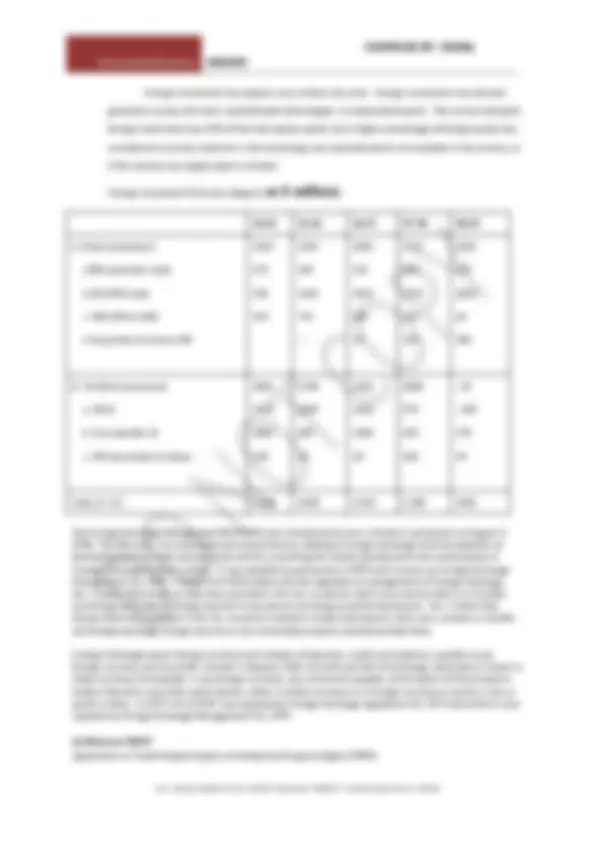
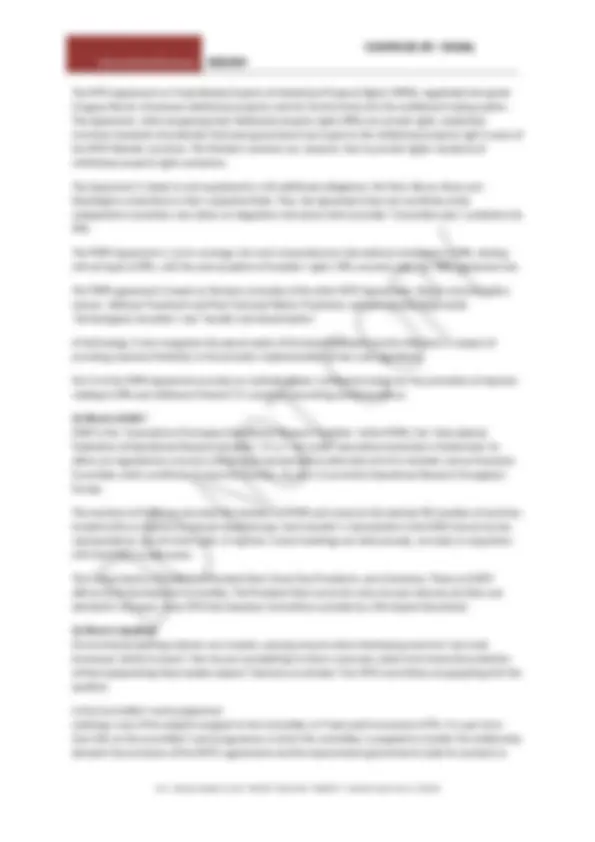
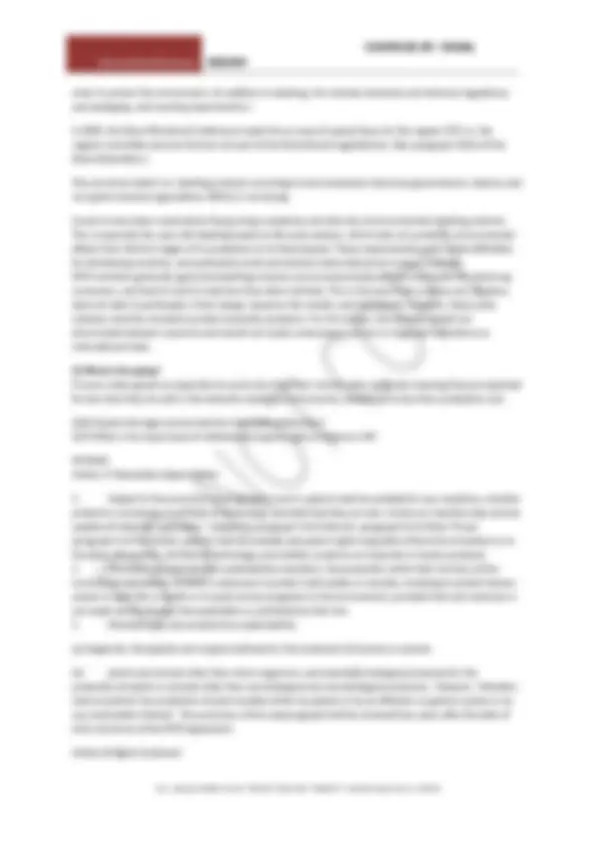
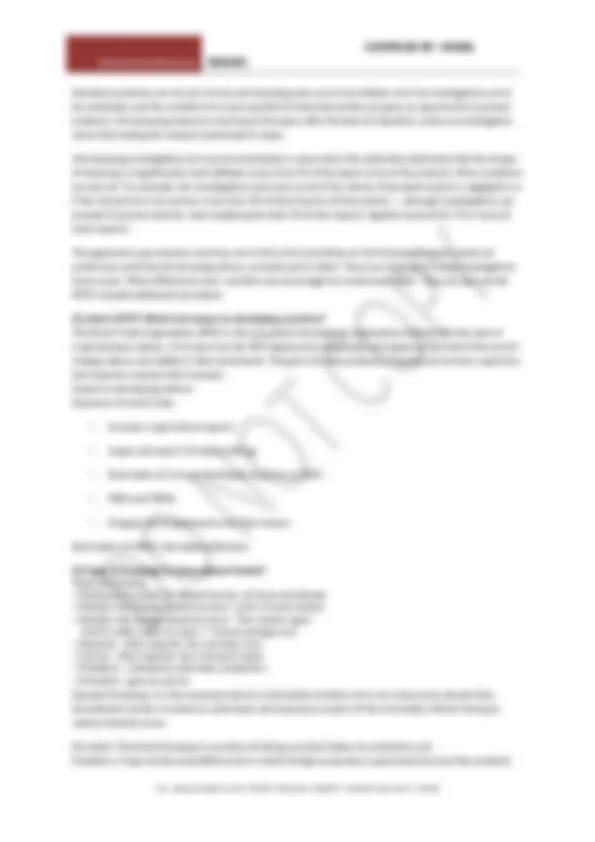
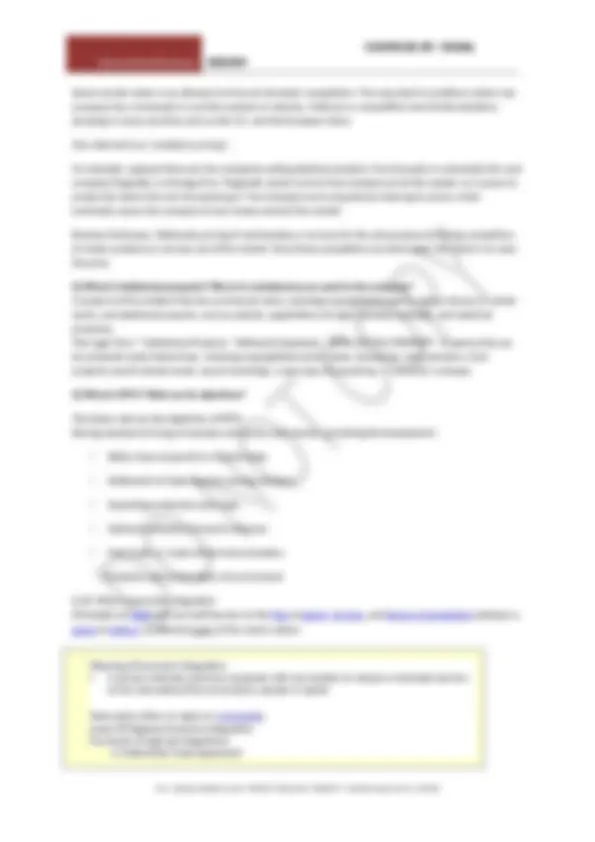
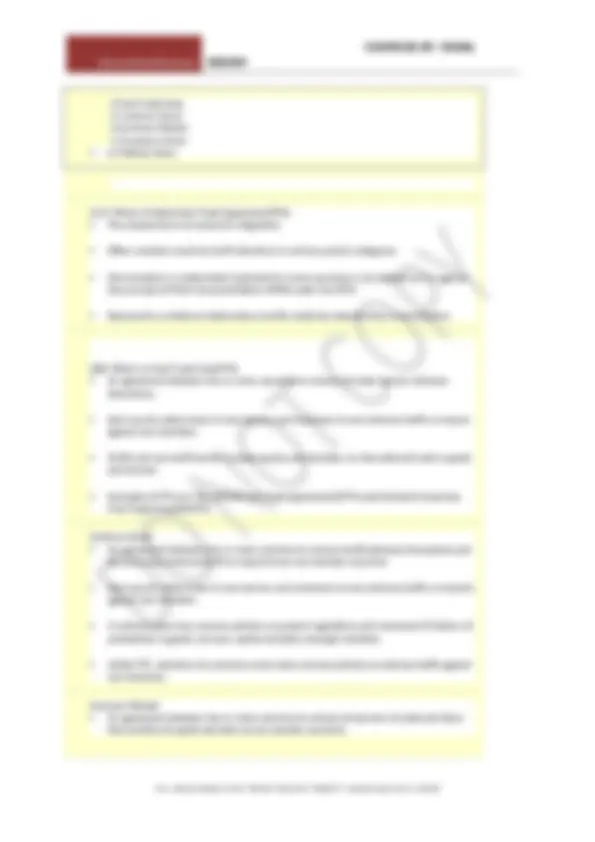
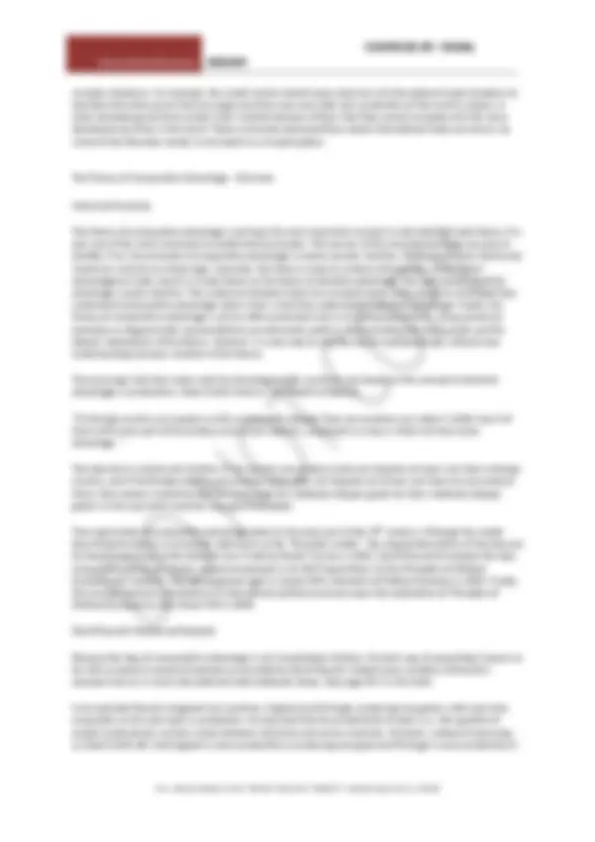
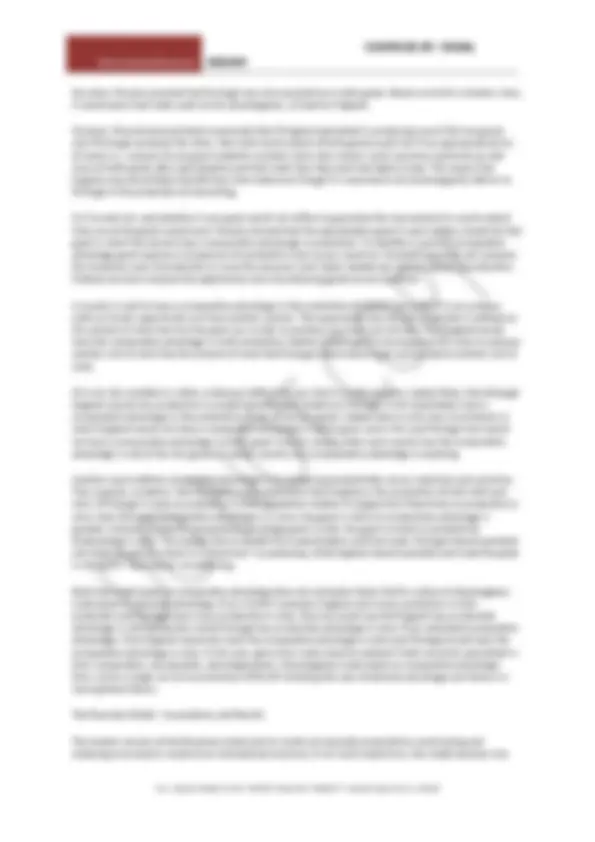
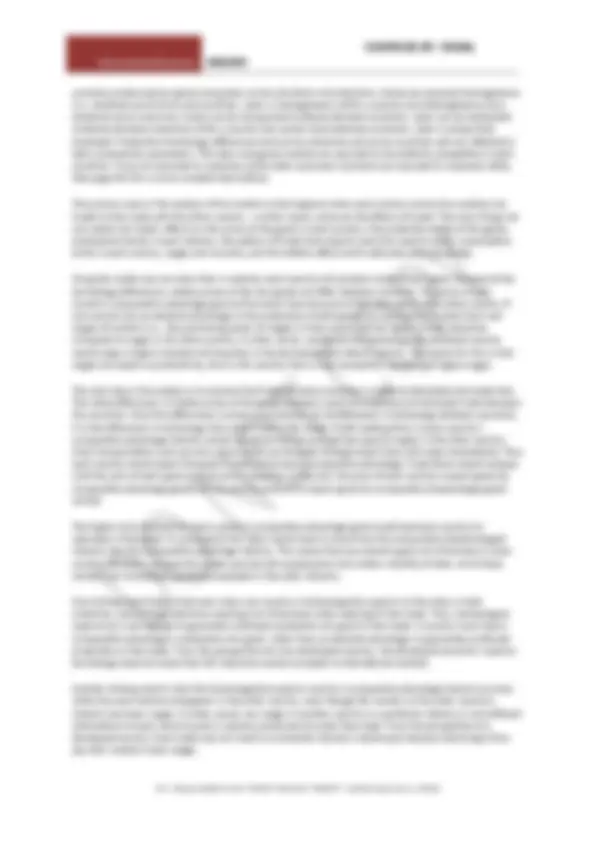
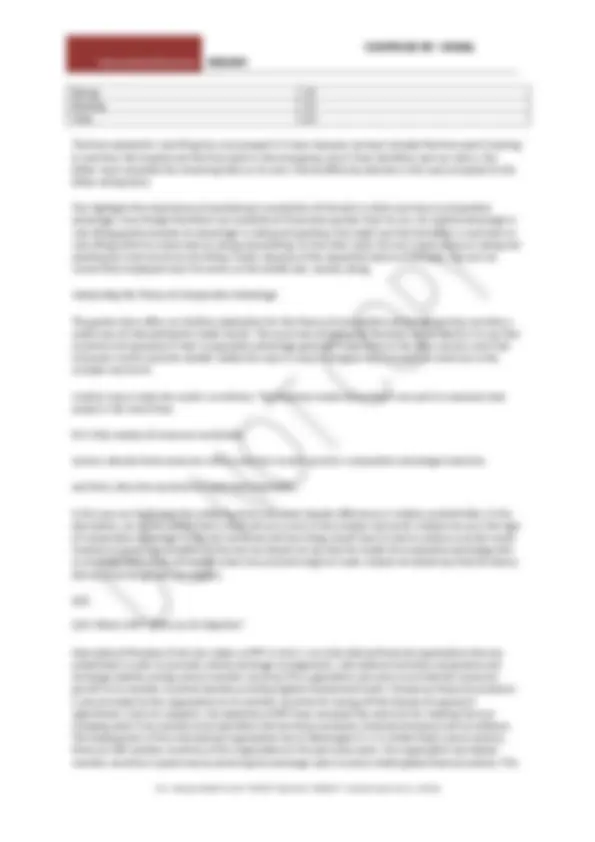
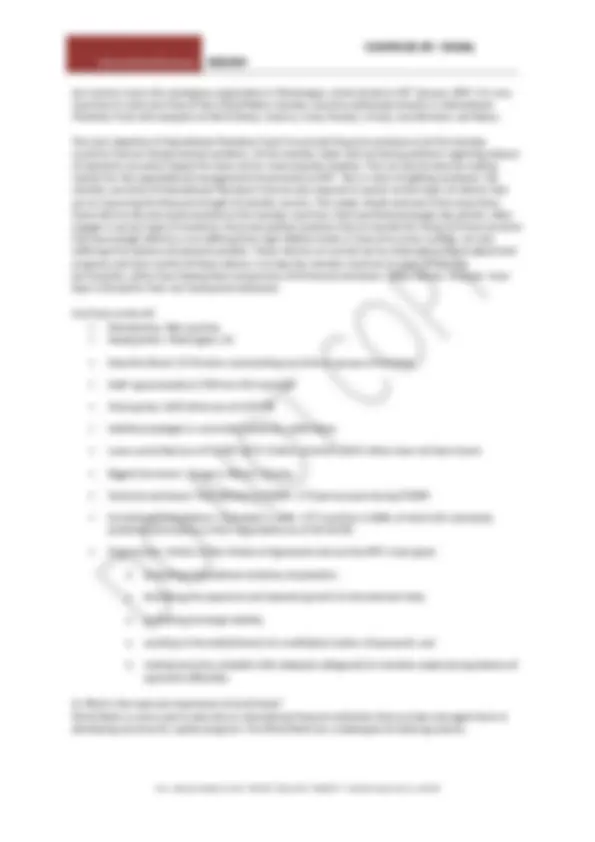
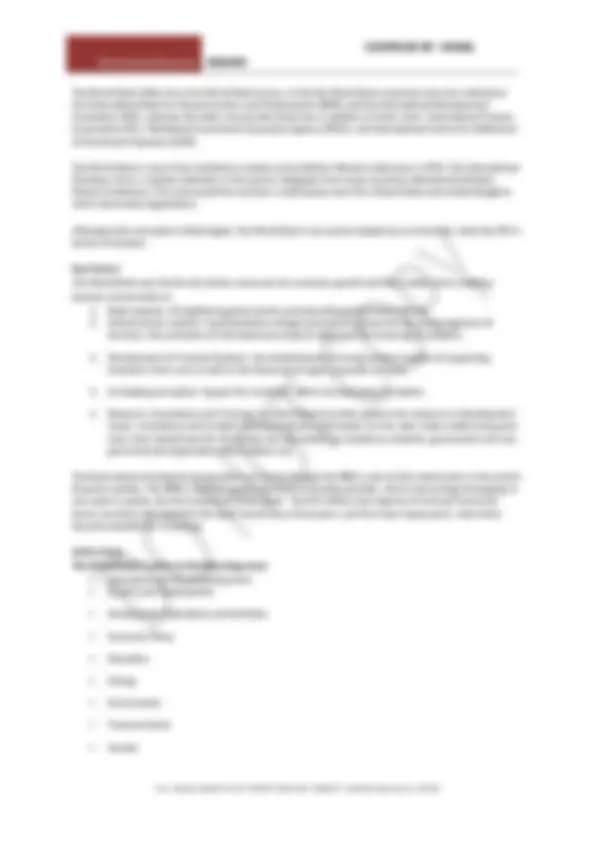
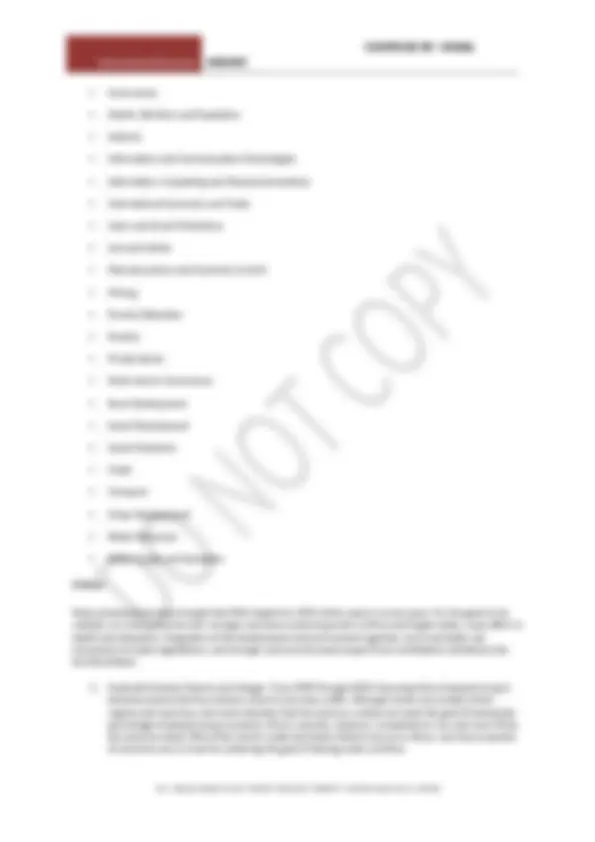
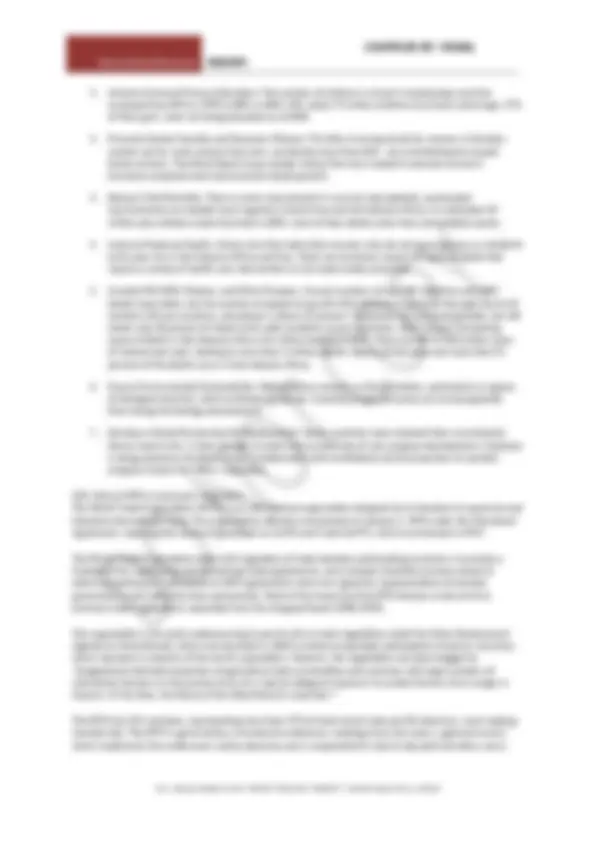
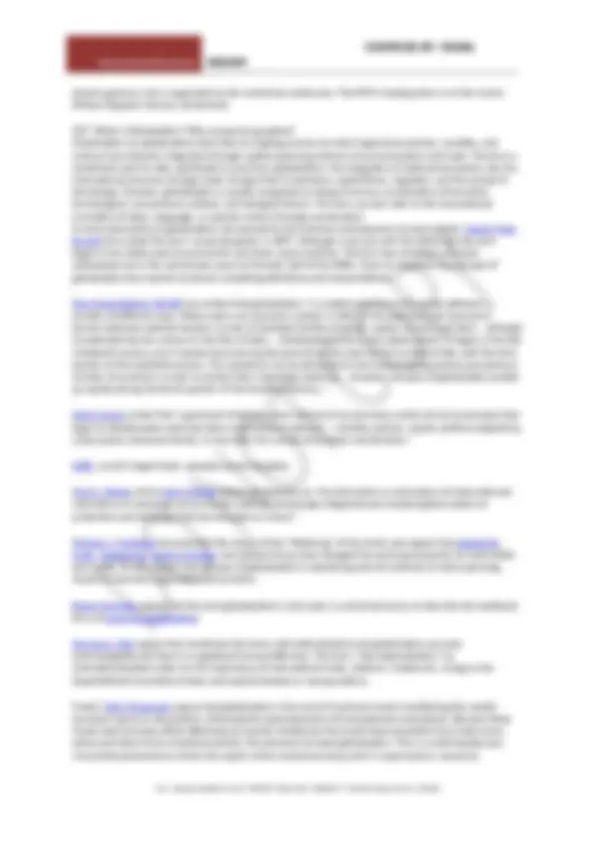
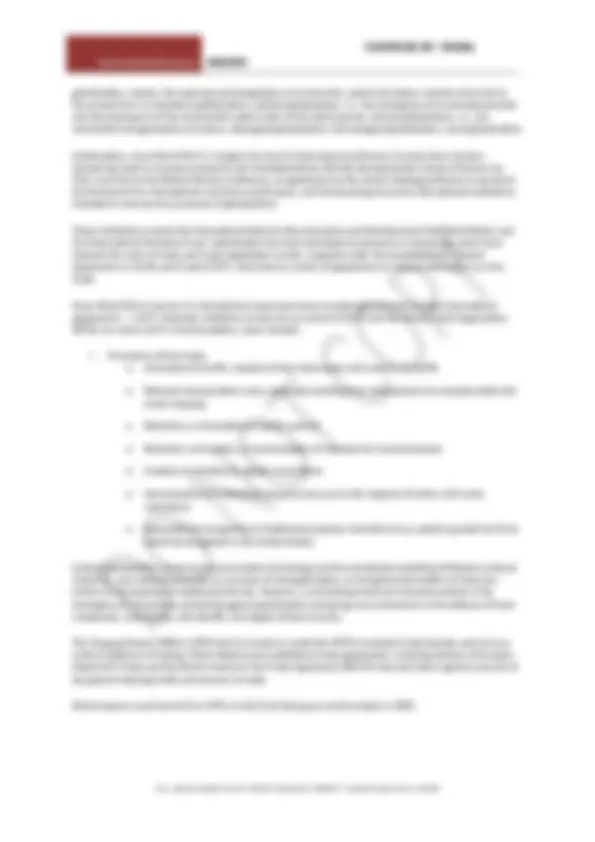
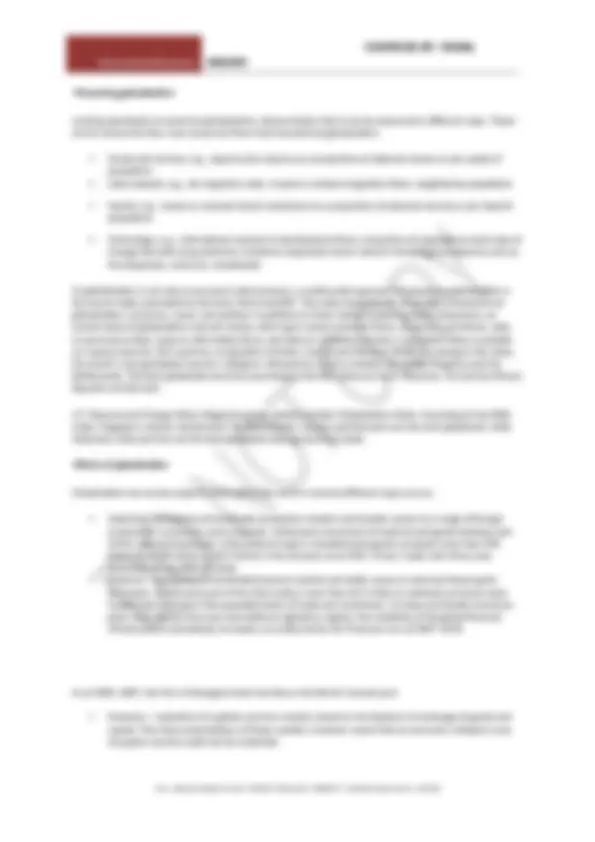
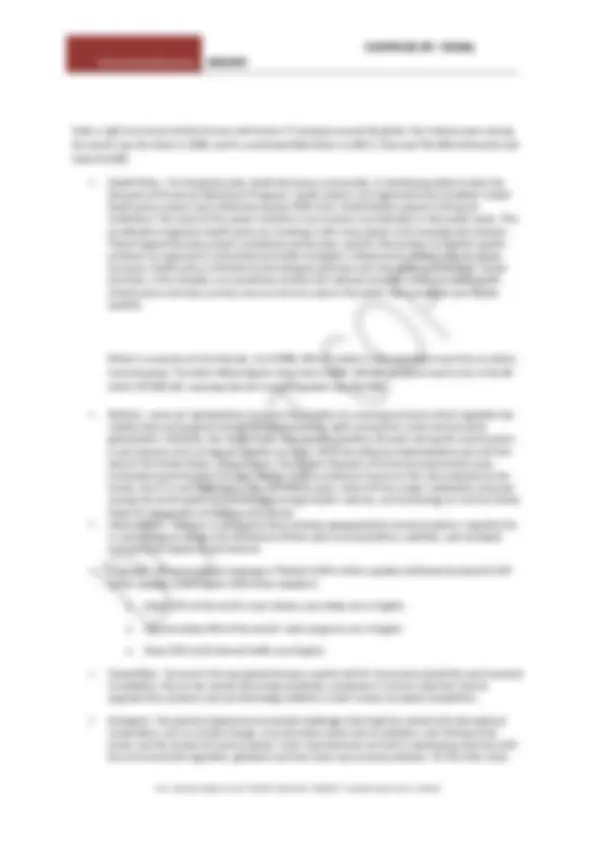
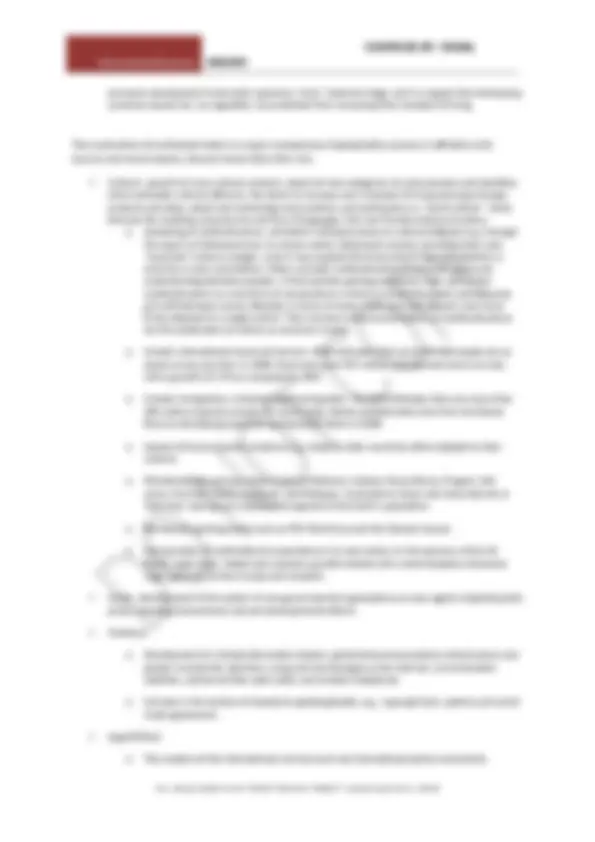
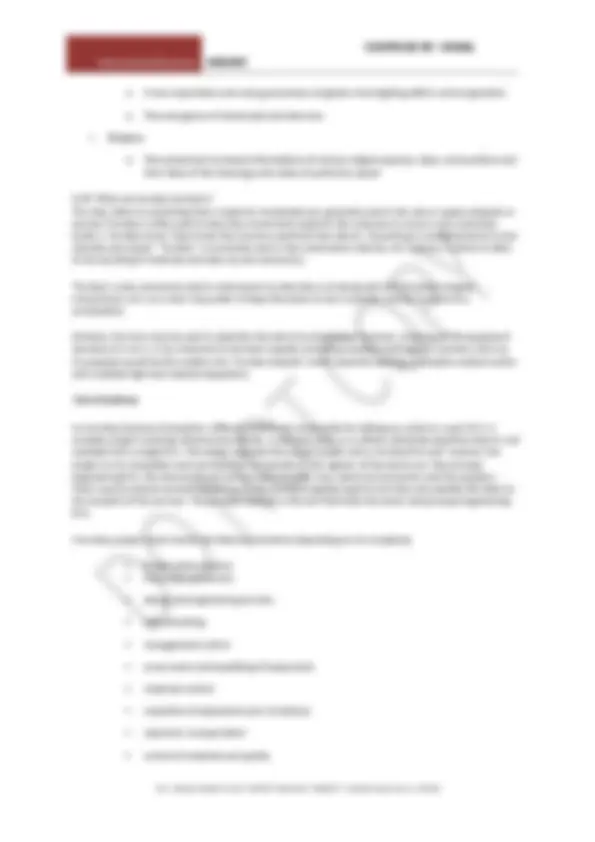

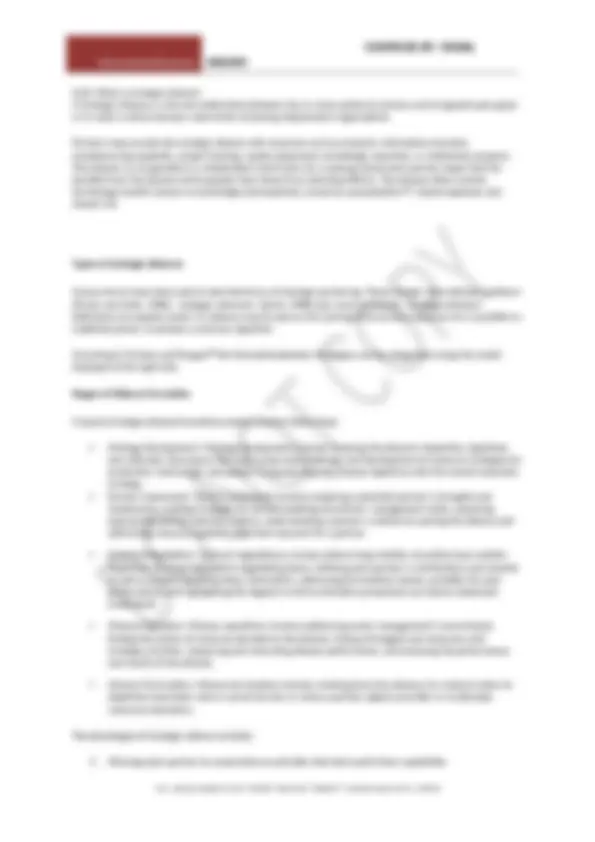
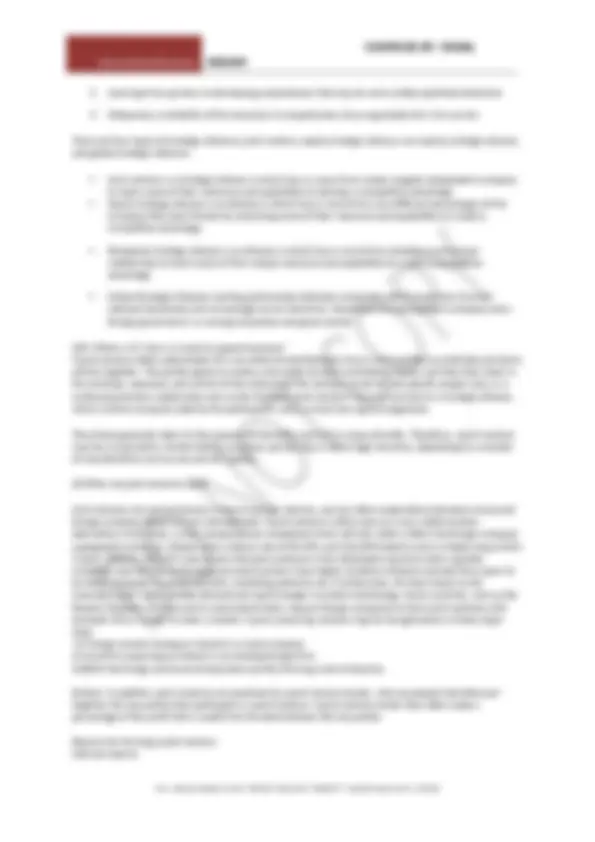
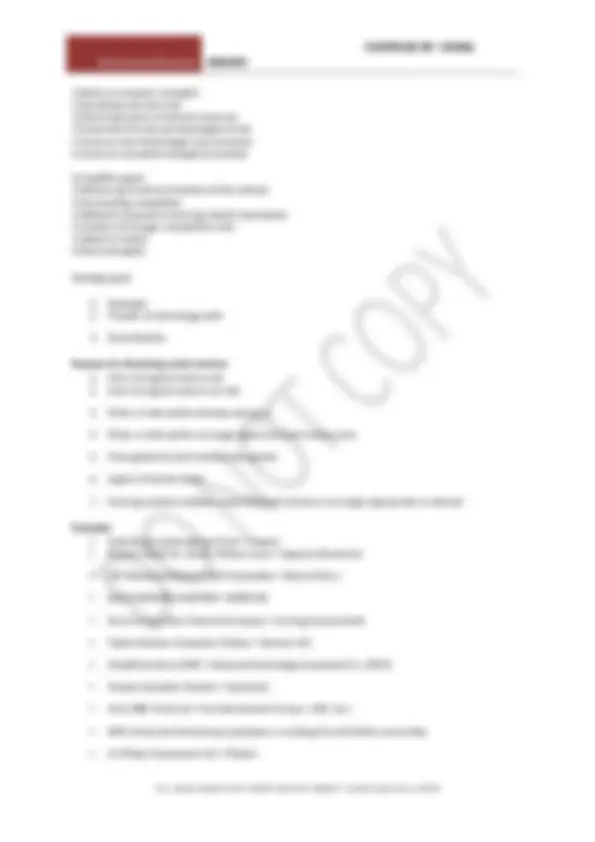
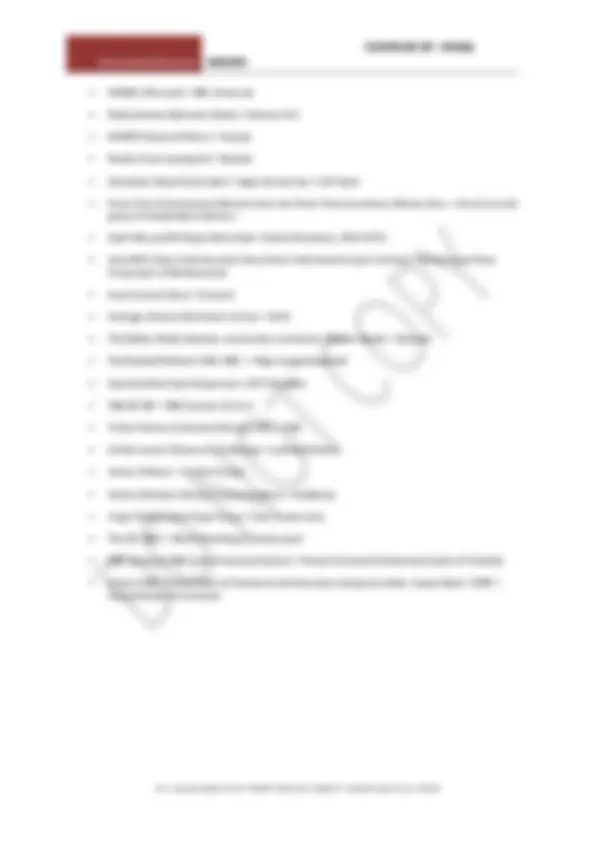
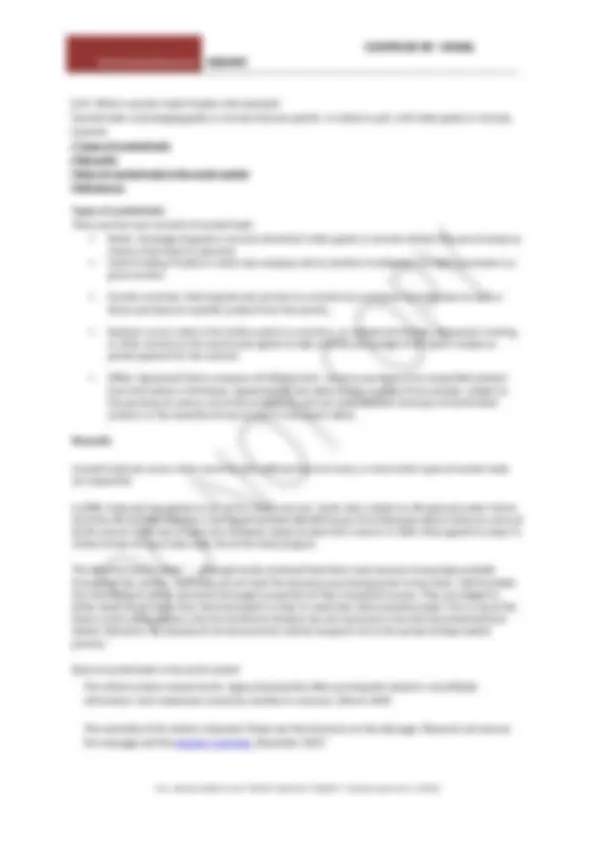
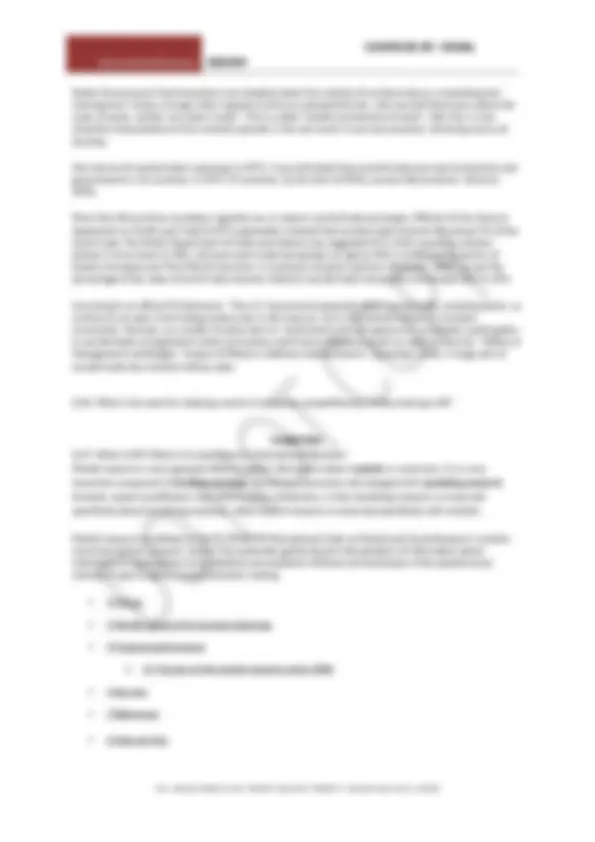
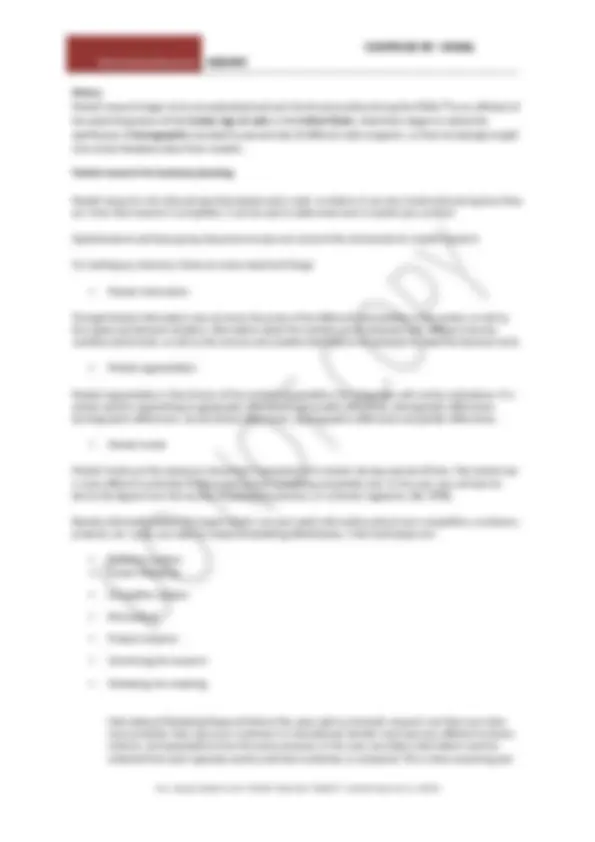
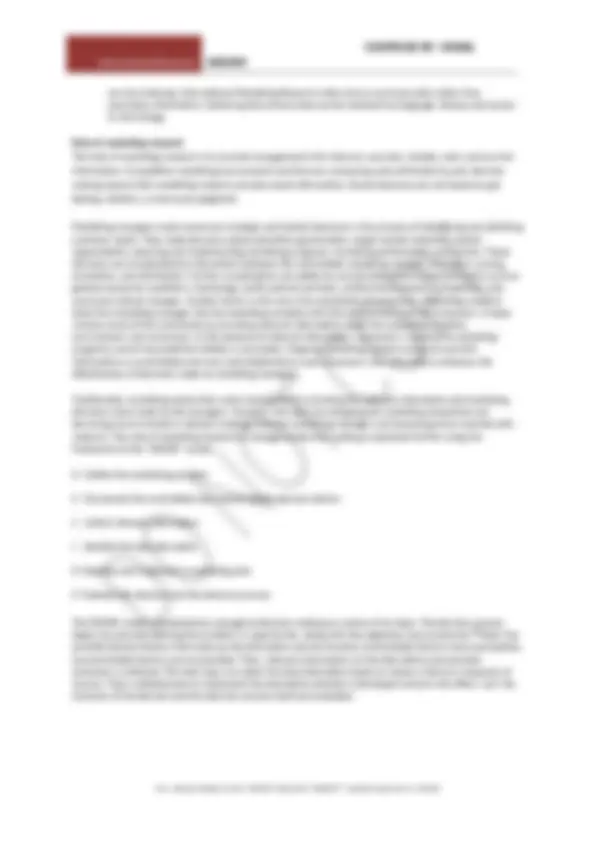
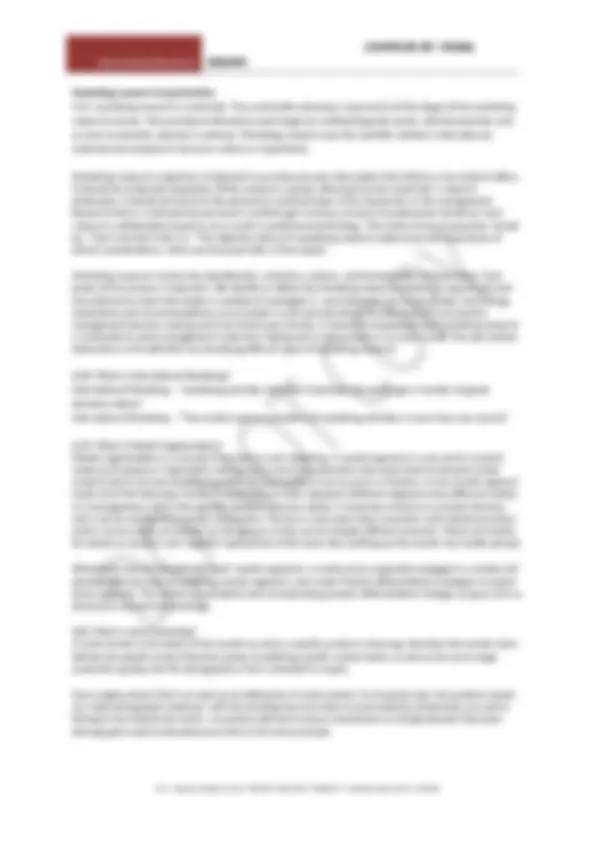
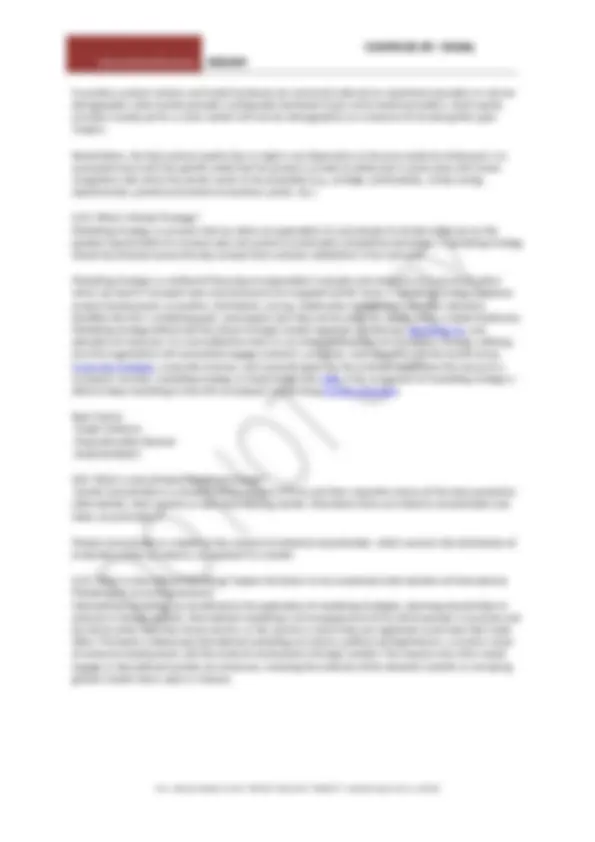
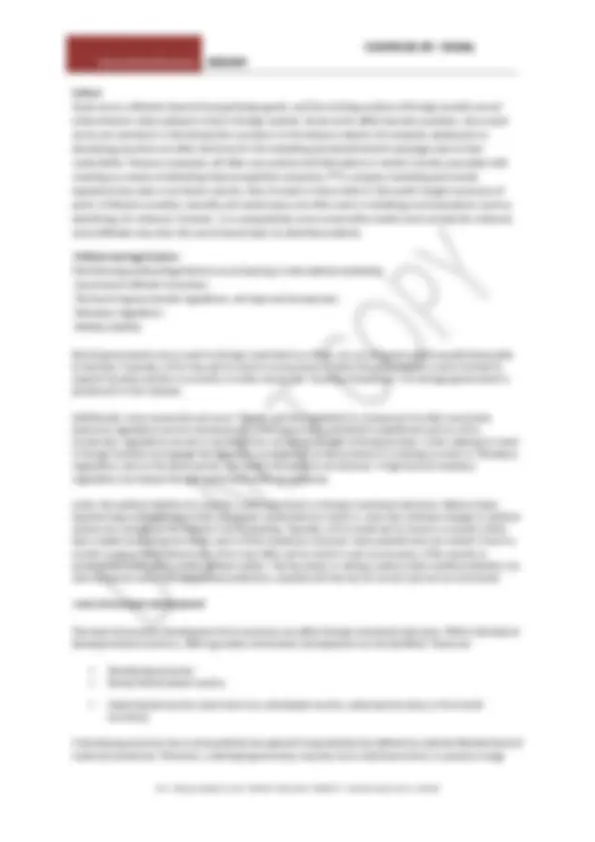
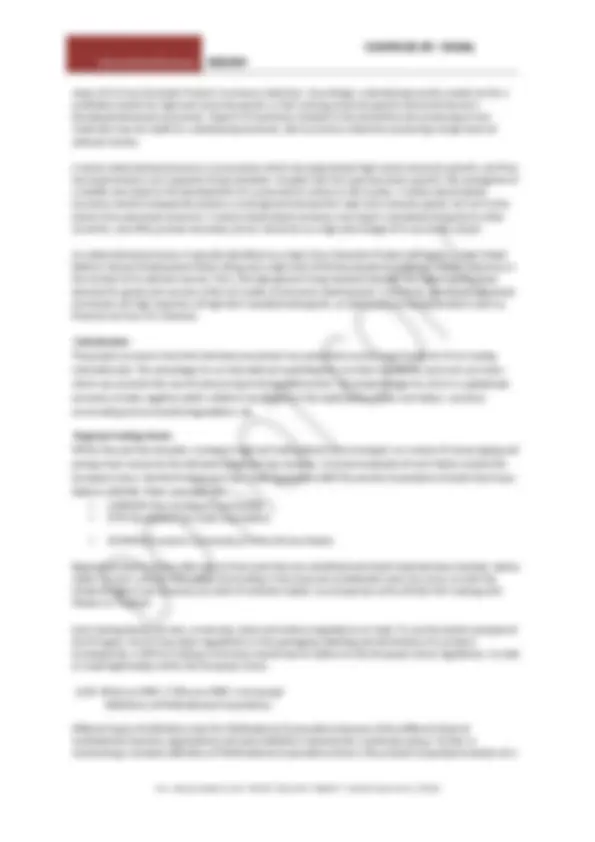
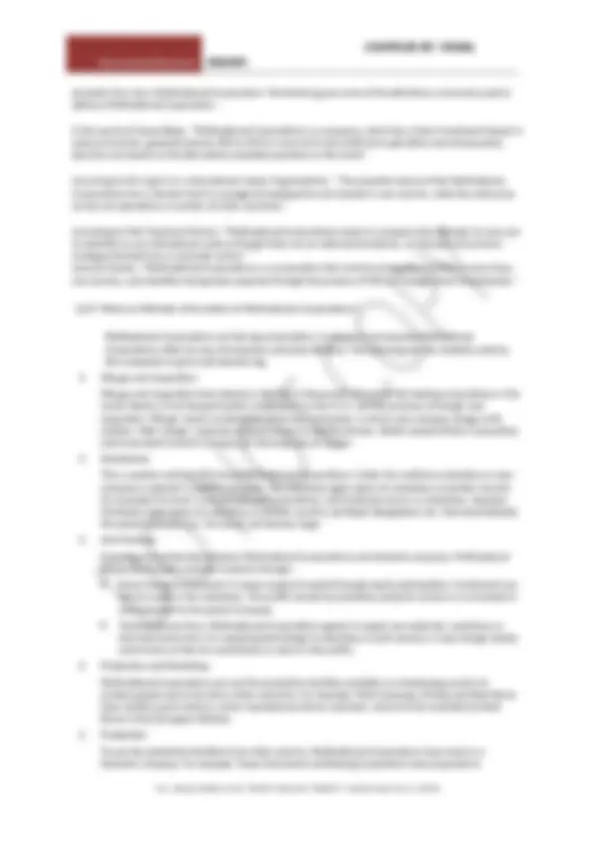
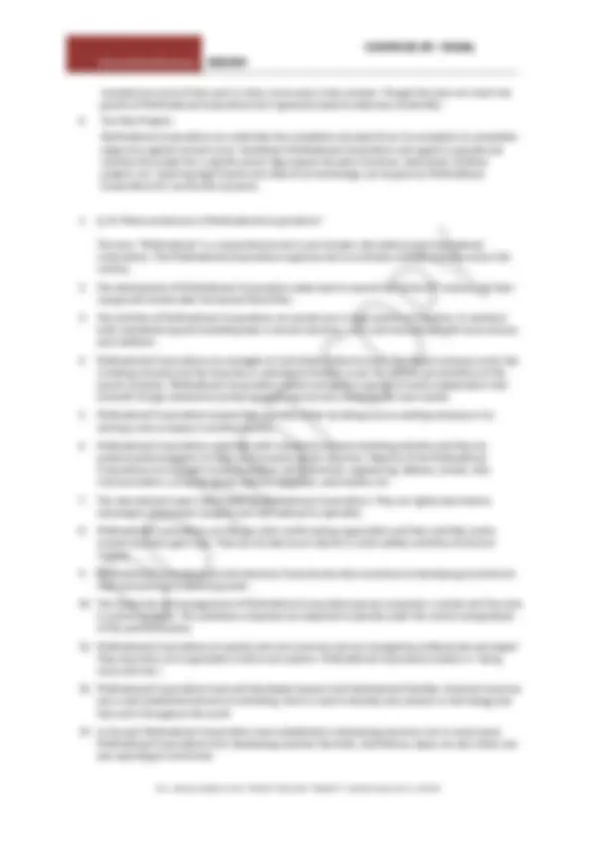
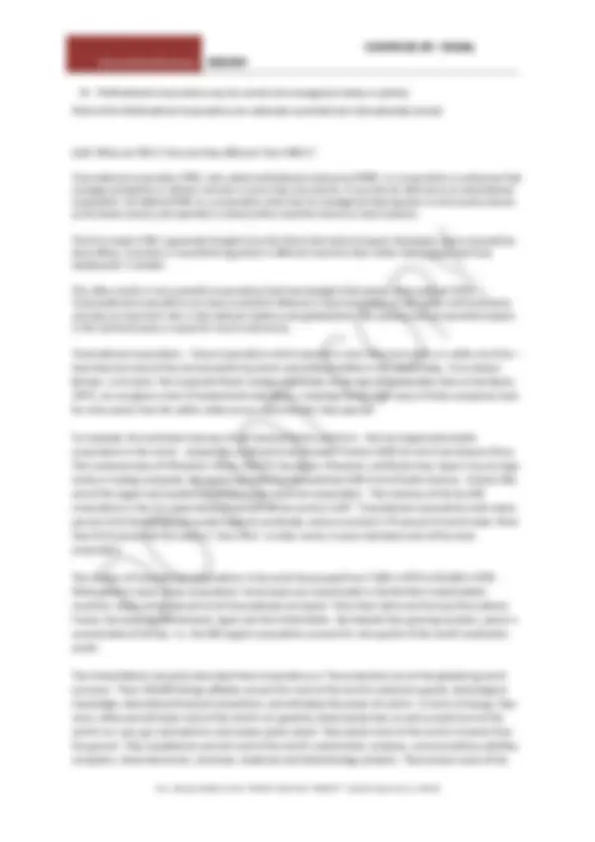
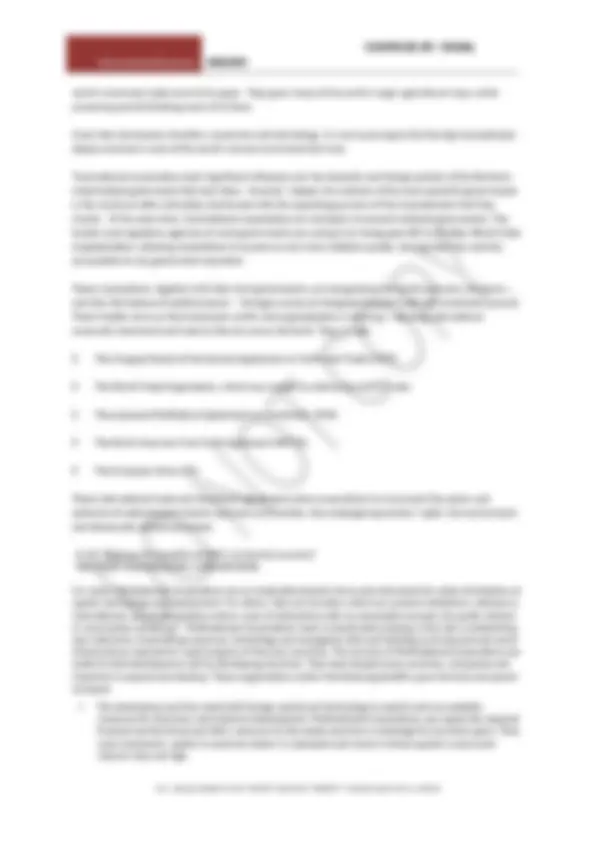
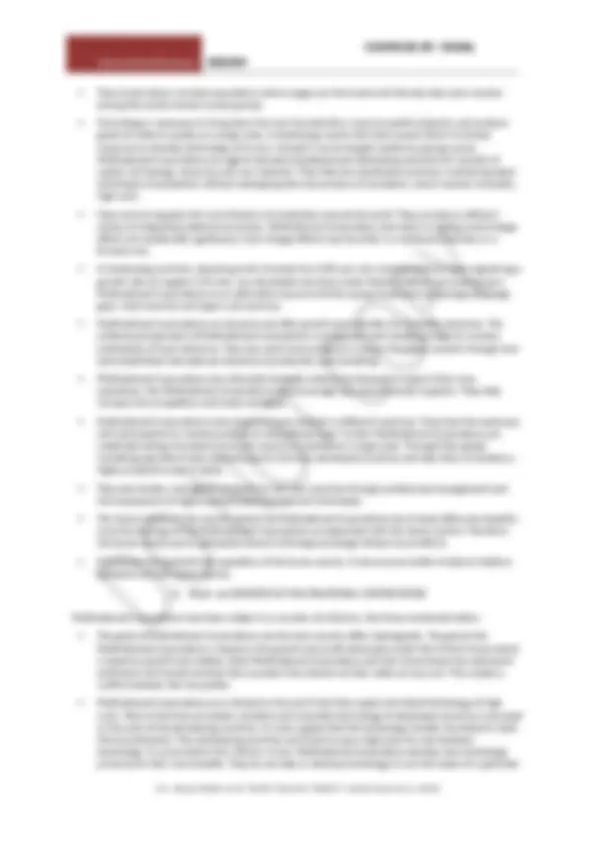
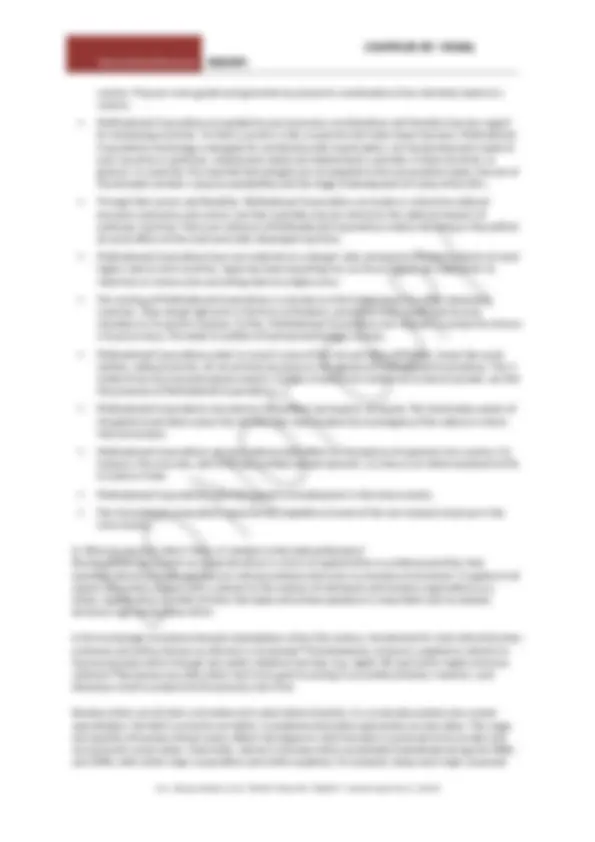
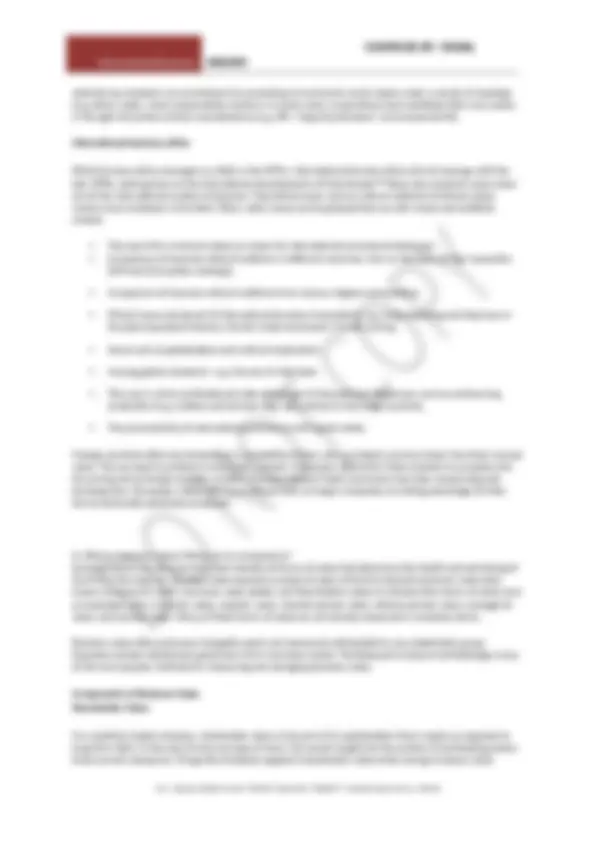
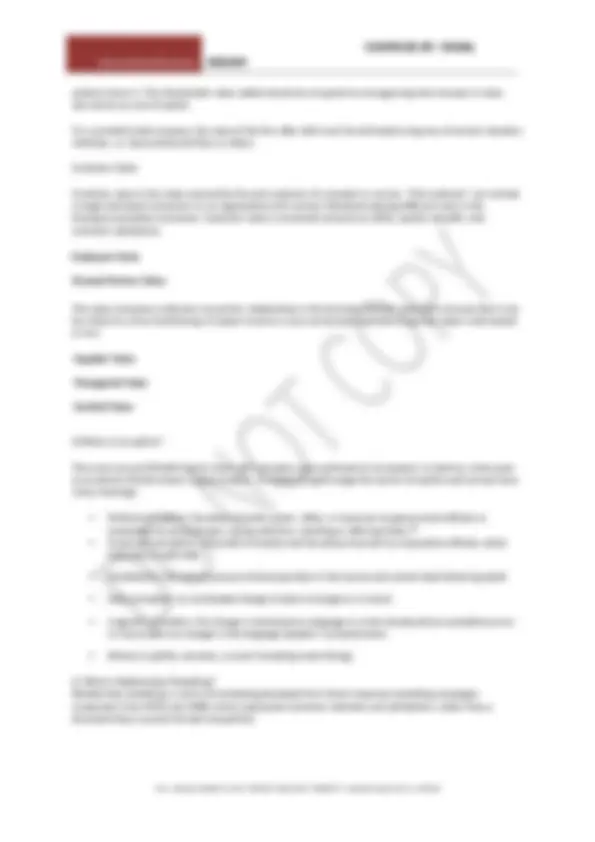
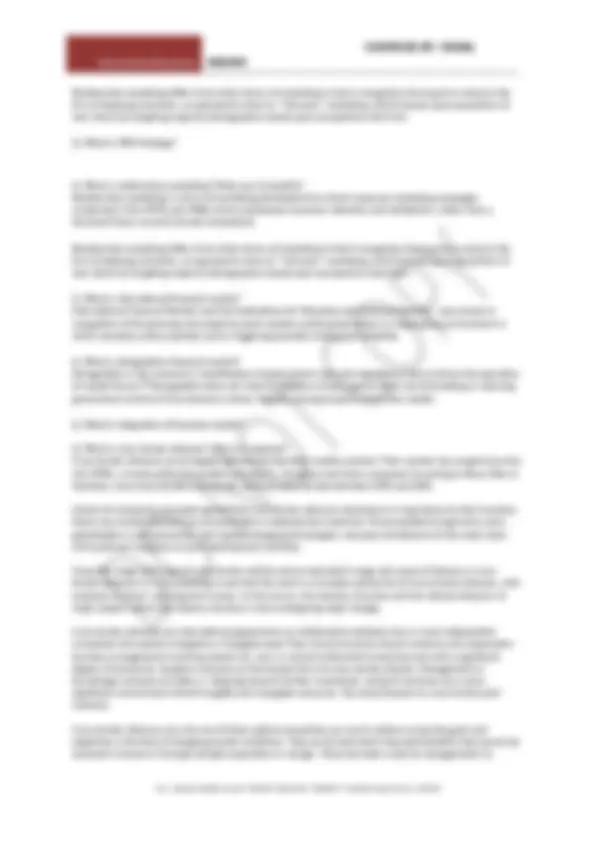
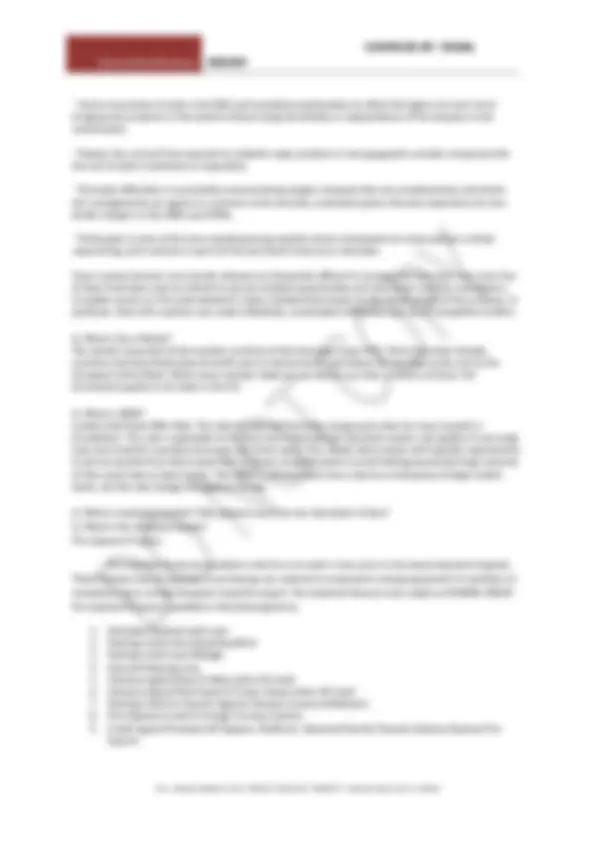
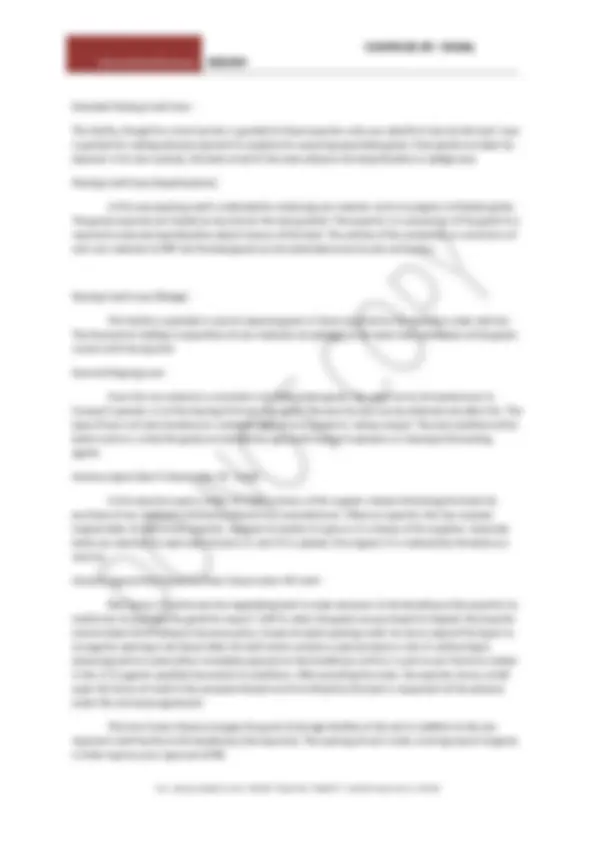
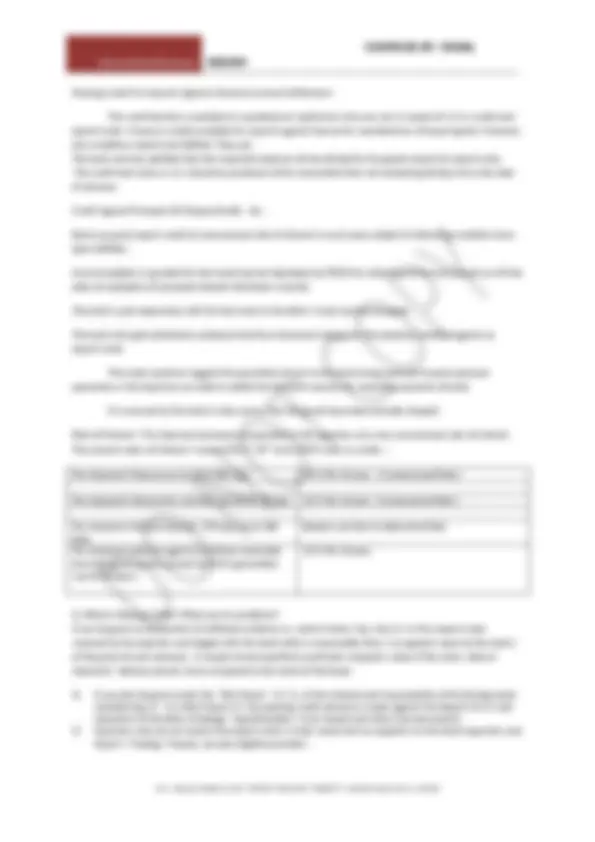
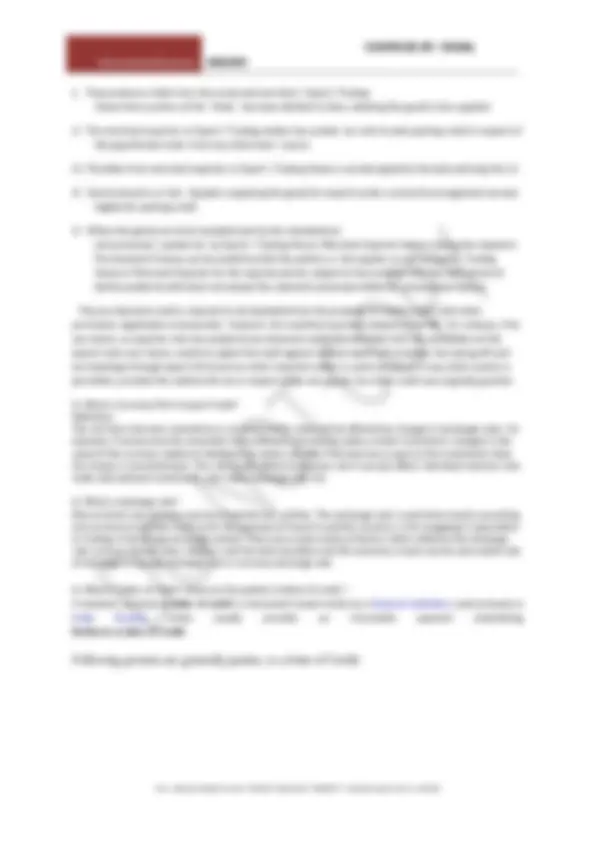
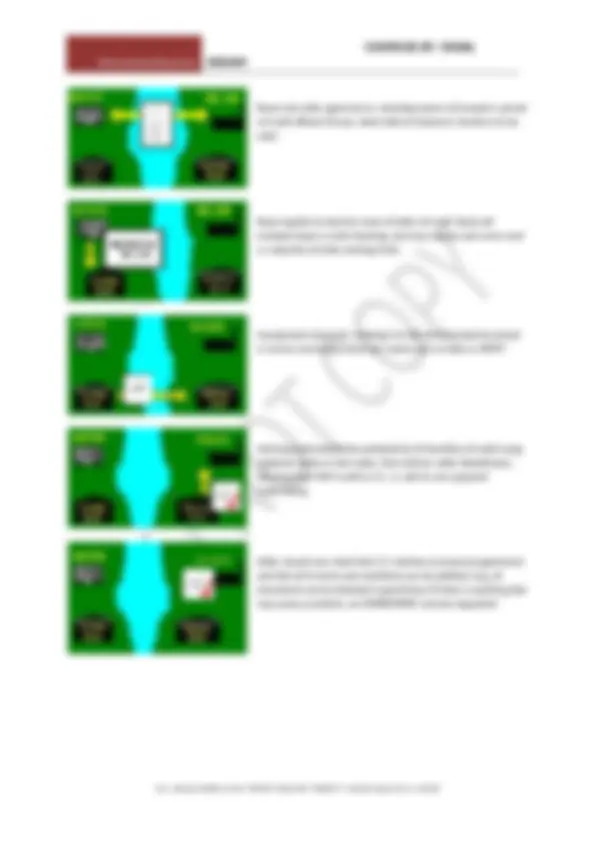
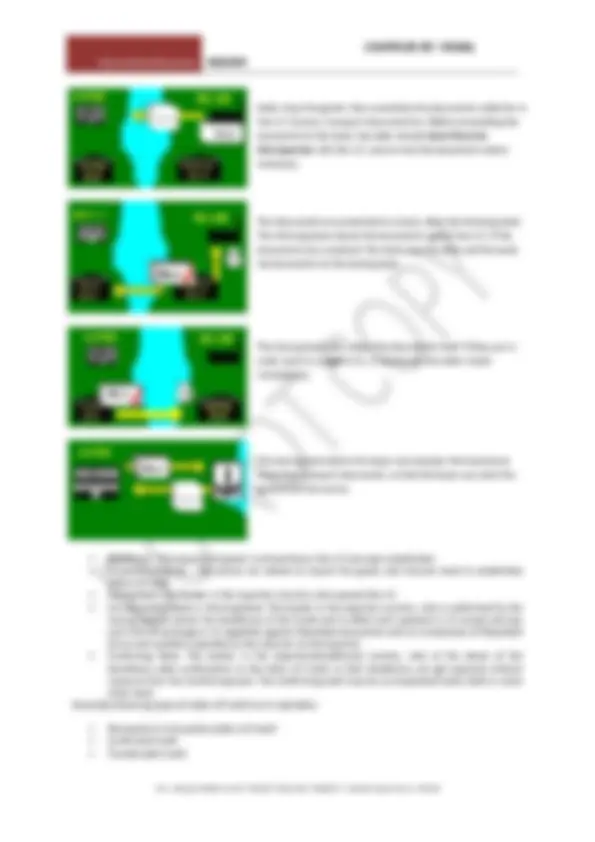
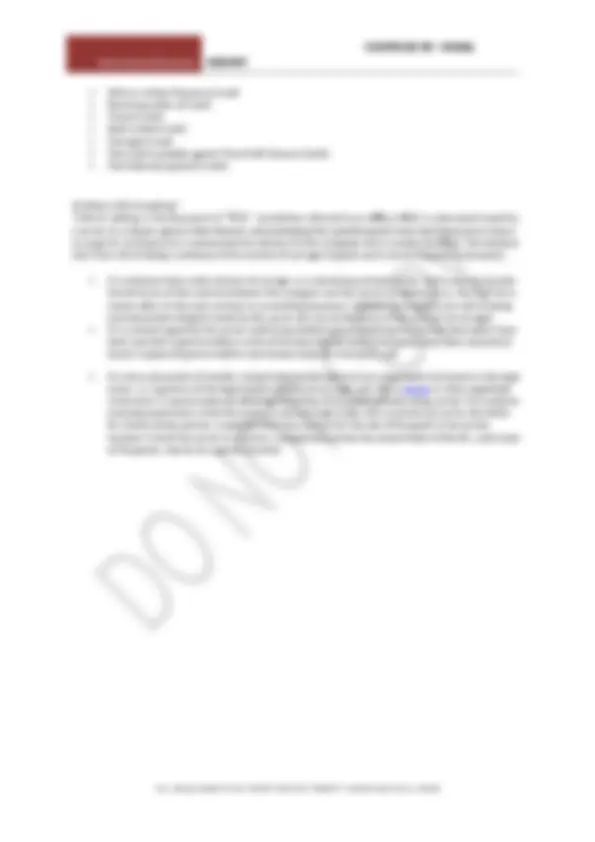
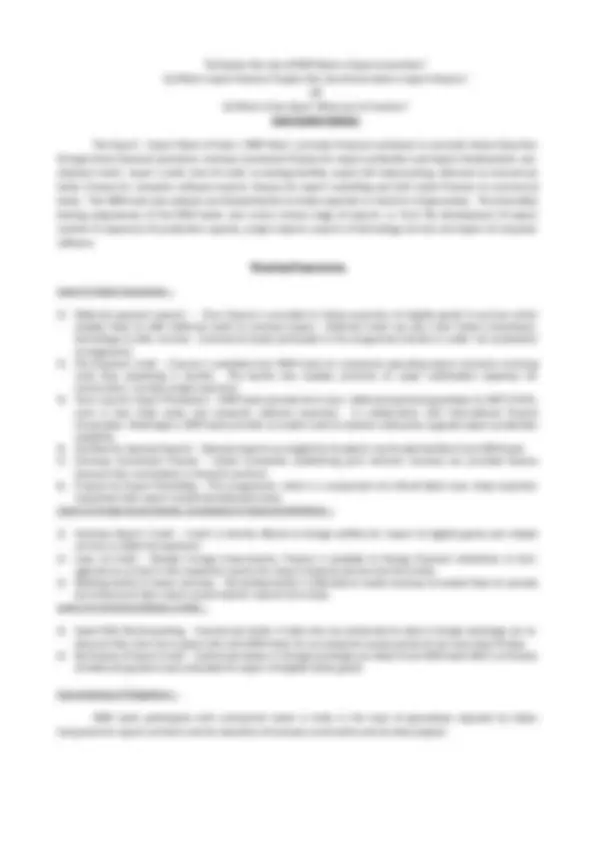
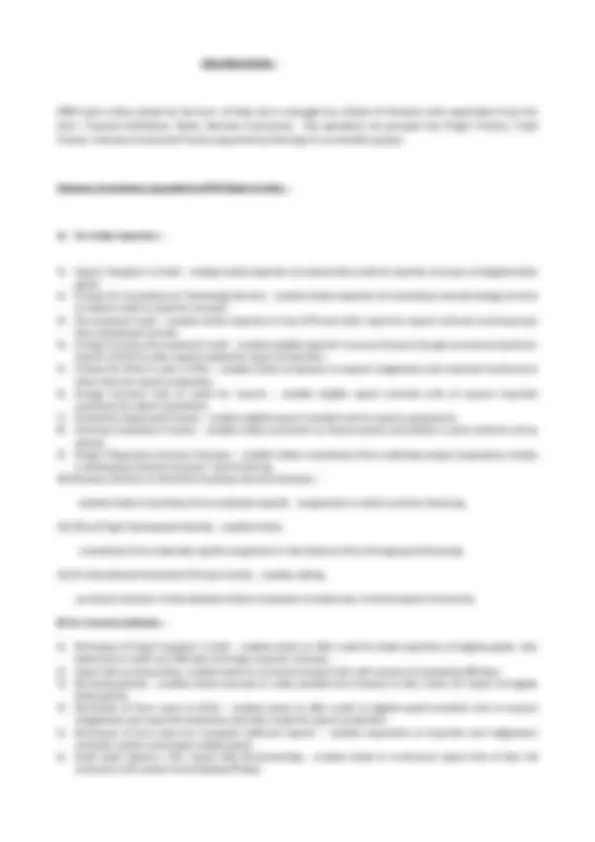
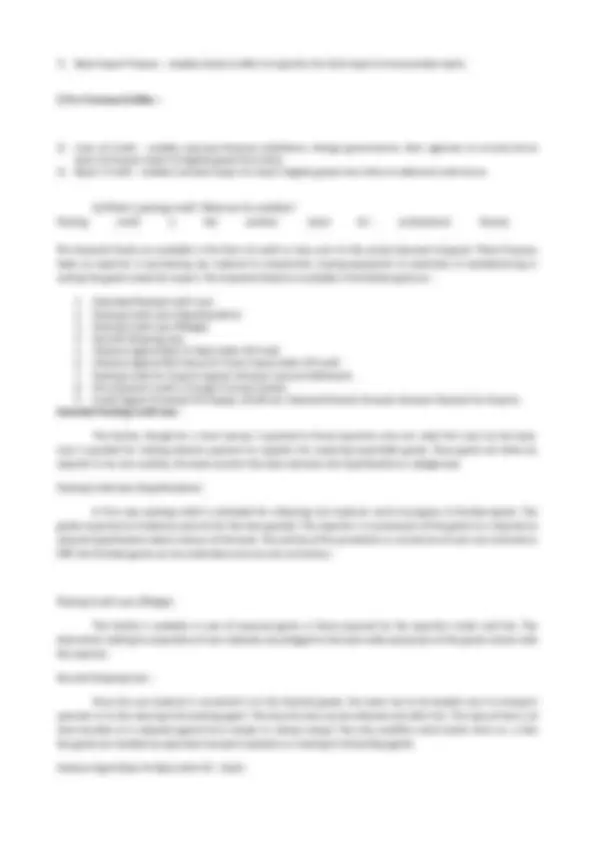
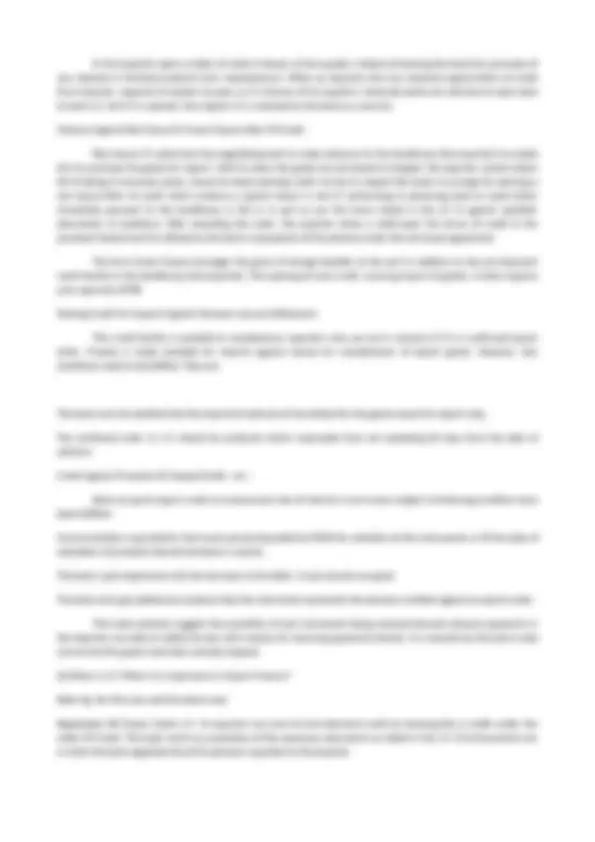
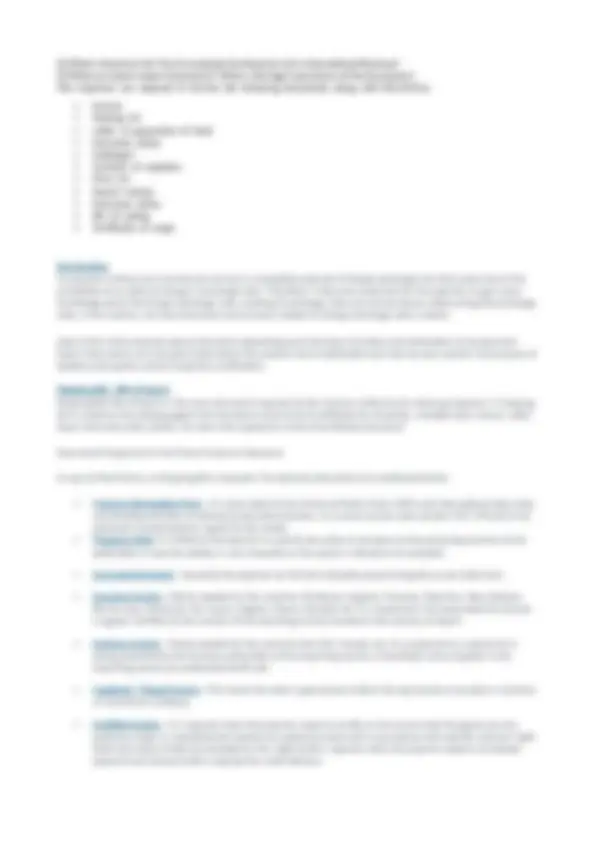
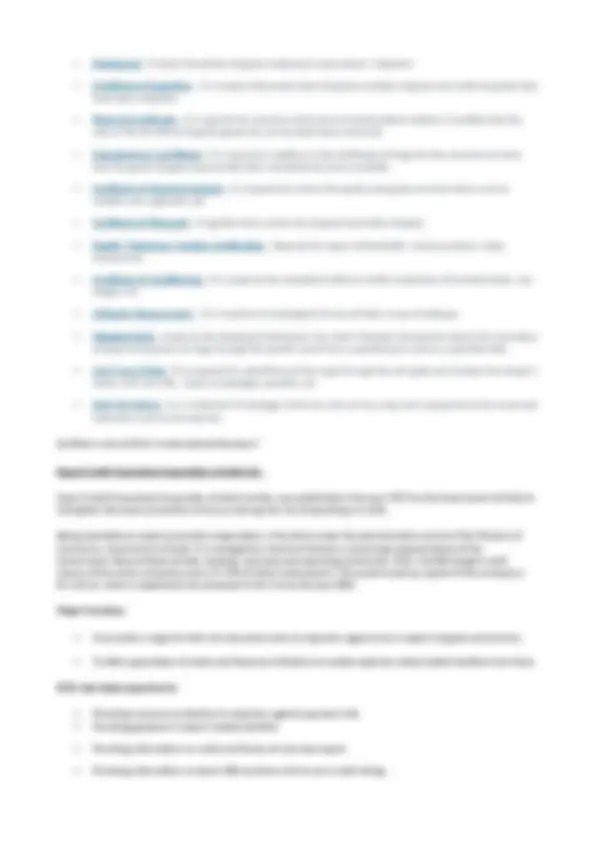
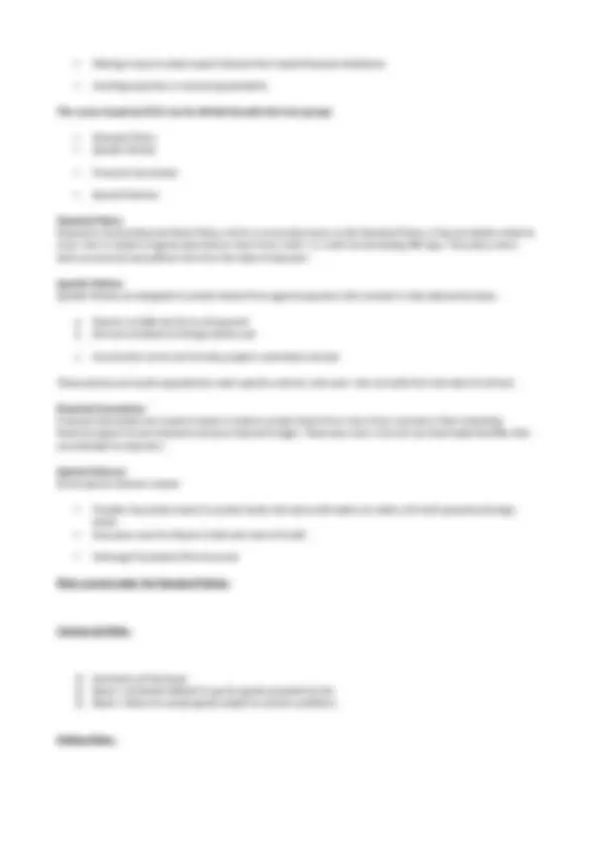
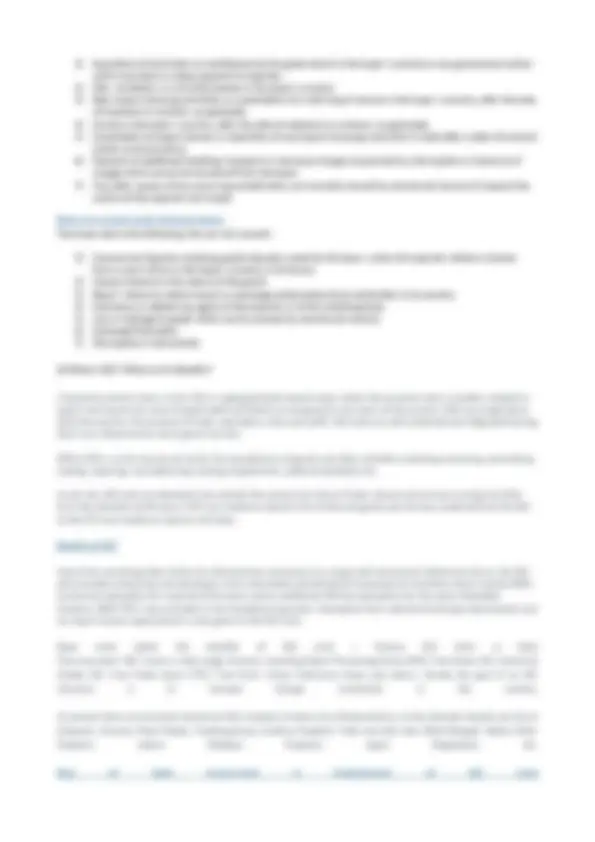
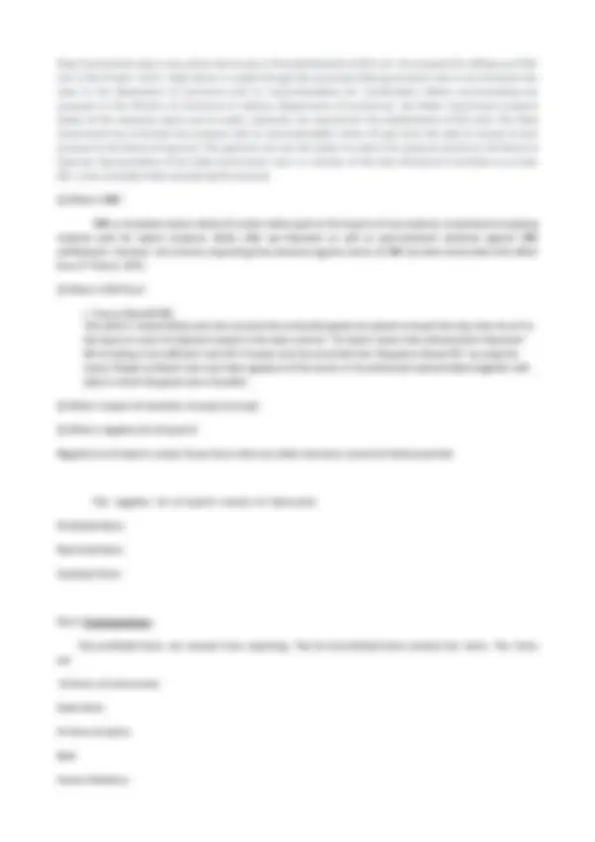
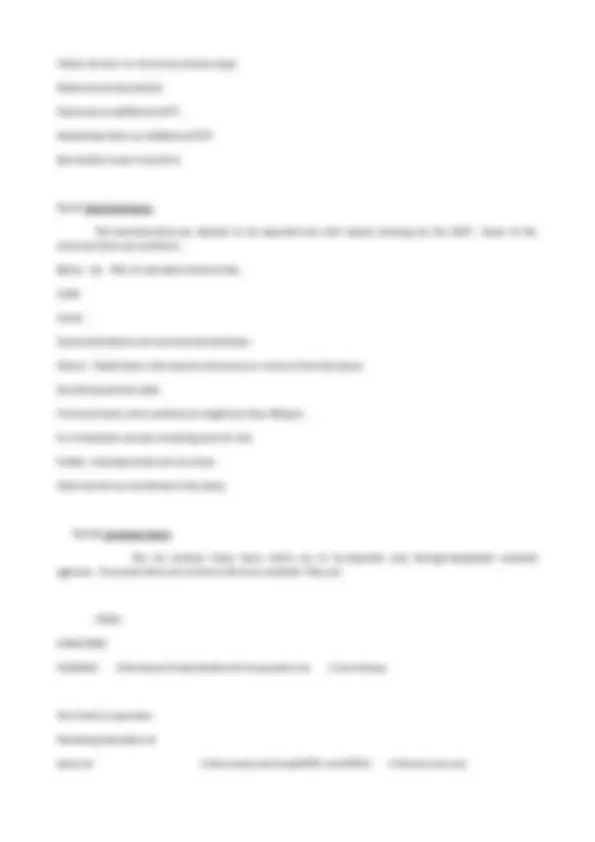
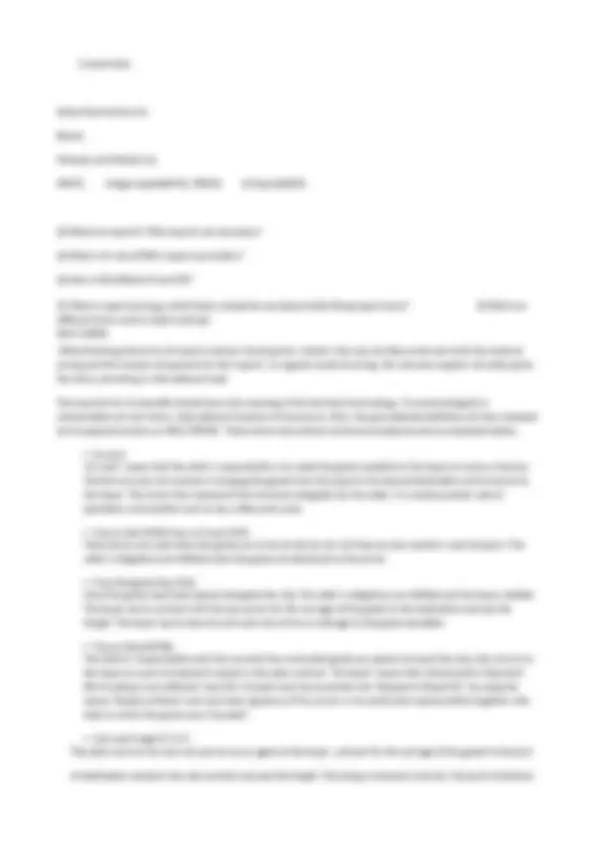
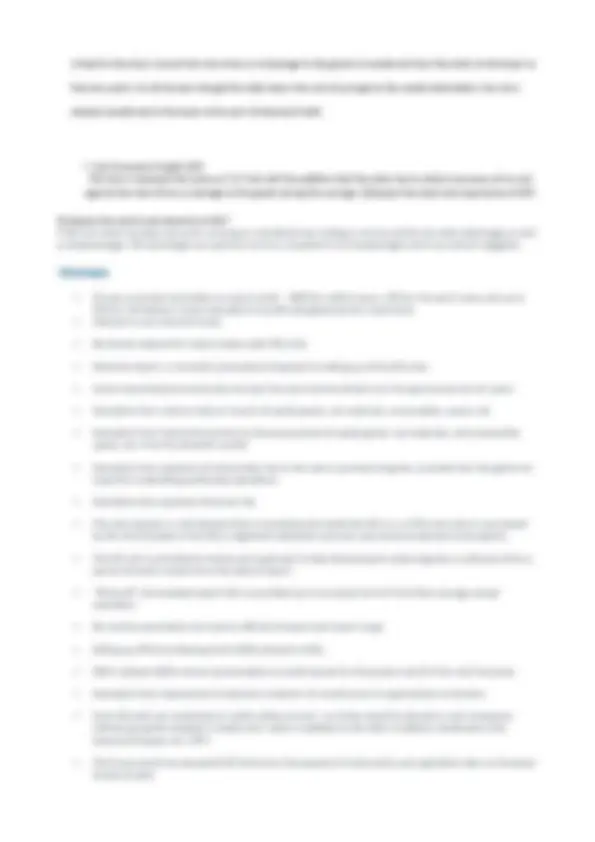
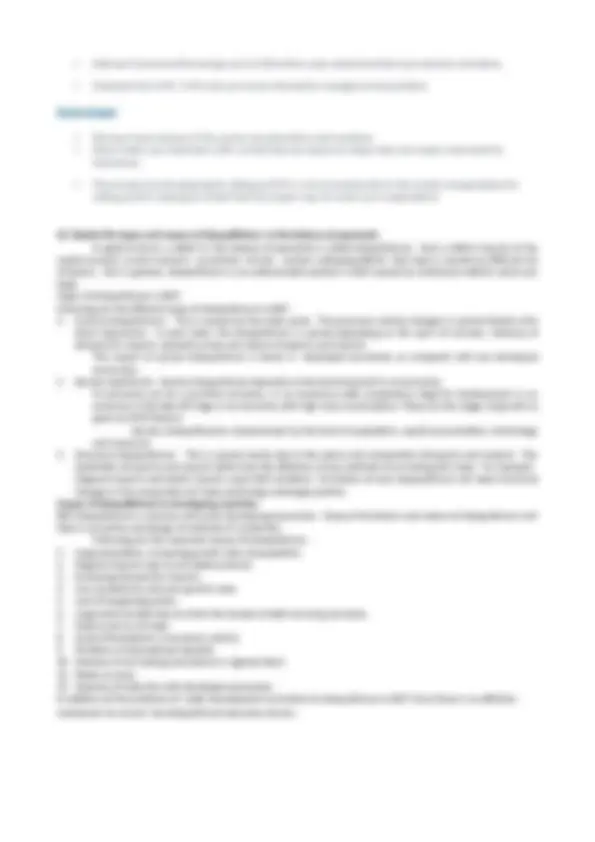
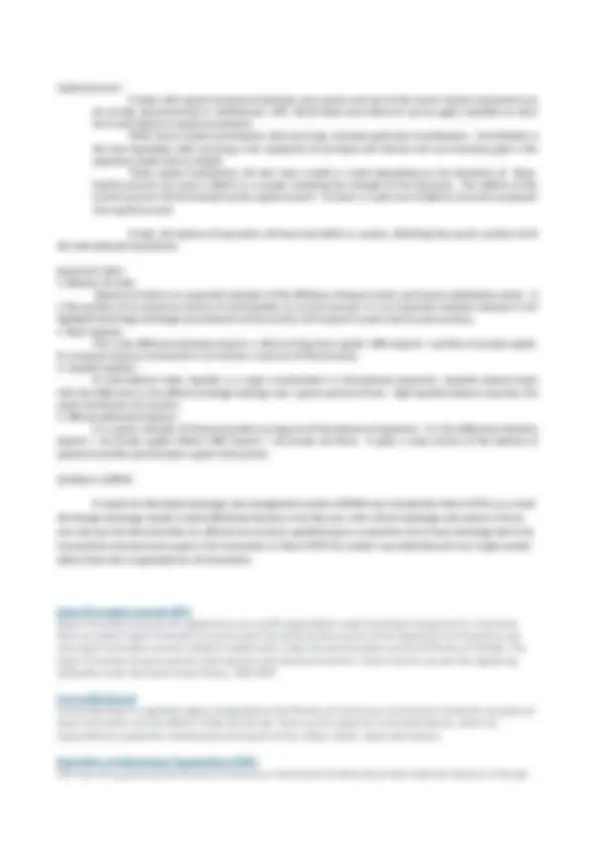




Study with the several resources on Docsity

Earn points by helping other students or get them with a premium plan


Prepare for your exams
Study with the several resources on Docsity

Earn points to download
Earn points by helping other students or get them with a premium plan
Community
Ask the community for help and clear up your study doubts
Discover the best universities in your country according to Docsity users
Free resources
Download our free guides on studying techniques, anxiety management strategies, and thesis advice from Docsity tutors
An overview of different types of trade agreements including preferential trade agreements (ptas), free trade areas (ftas), customs unions, common markets, and political union. It explains the key features of each agreement, such as tariff reductions, discrimination, and common external tariffs. The document also discusses the role of the international monetary fund (imf) and the world trade organization (wto) in regulating international trade.
What you will learn
Typology: Study notes
1 / 73

This page cannot be seen from the preview
Don't miss anything!


































































KADAM Q) What is International Business? What are its importance? Q) Distinguish between International & Domestic Trade? Distinction between internal and international trade Distinction between internal and international trade in general involves transaction for mutual benefit For this reason both the trading parties will have equal interest. Trade is a case of geographic specific area. An area specialises in an activity and trade takes place. Trade needs optimising activity. Profits are measured by minimising cost and increasing volume of trade. International trade has certain distinguishing factors as compared with ordinary trade.
KADAM
KADAM The WTO Agreement on Trade-Related Aspects of Intellectual Property Rights (TRIPS), negotiated during the Uruguay Round, introduced intellectual property rules for the first time into the multilateral trading system. The Agreement, while recognizing that intellectual property rights (IPRs) are private rights, establishes minimum standards of protection that each government has to give to the intellectual property right in each of the WTO Member countries. The Member countries are, however, free to provide higher standards of intellectual property rights protection. The Agreement is based on and supplements, with additional obligations, the Paris, Berne, Rome and Washington conventions in their respective fields. Thus, the Agreement does not constitute a fully independent convention, but rather an integrative instrument which provides "Convention-plus" protection for IPRs. The TRIPS Agreement is, by its coverage, the most comprehensive international instrument on IPRs, dealing with all types of IPRs, with the sole exception of breeders' rights. IPRs covered under the TRIPS agreement are: The TRIPS agreement is based on the basic principles of the other WTO Agreements, like non-discrimination clauses - National Treatment and Most Favoured Nation Treatment, and are intended to promote "technological innovation" and "transfer and dissemination" of technology. It also recognizes the special needs of the least-developed country Members in respect of providing maximum flexibility in the domestic implementation of laws and regulations. Part V of the TRIPS Agreement provides an institutionalized, multilateral means for the prevention of disputes relating to IPRs and settlement thereof. It is aimed at preventing unilateral actions. Q) What is EURO? EURO is the "Association of European Operational Research Societies" within IFORS, the "International Federation of Operational Research Societies". It is a "non profit" association domiciled in Switzerland. Its affairs are regulated by a Council consisting of representatives/alternates of all its members and an Executive Committee which constitutes its board of directors. Its aim is to promote Operational Research throughout Europe. The members of EURO are normally full members of IFORS and comprise the national OR societies of countries located within or nearby (in a broad sense) Europe. Each member is represented in the EURO Council by two representatives, one of whom votes, if required. Council meetings are held annually, normally in conjunction with the EURO-k conferences. The Council elects a President, a President-Elect, three Vice-Presidents, and a Secretary. These six EURO officers form the Executive Committee. The President-Elect serves for only one year whereas all others are elected for two years. Since 1993 the Executive Committee is assisted by a Permanent Secretariat. Q) What is labelling? Environmental labelling schemes are complex, causing concerns about developing countries’ and small businesses’ ability to export. How do you use labelling to inform consumers about environmental protection without jeopardizing these weaker players? Opinions are divided. Two WTO committees are grappling with the question. In the Committee’s work programme Labelling is one of the subjects assigned to the Committee on Trade and Environment (CTE). It is part of an item (3b) on the committee’s work programme in which the committee is assigned to consider the relationship between the provisions of the WTO’s agreements and the requirements governments make for products in
KADAM order to protect the environment. (In addition to labelling, this includes standards and technical regulations, and packaging, and recycling requirements.) In 2001, the Doha Ministerial Conference made this an issue of special focus for the regular CTE (i.e. the regular committee sessions that are not part of the Doha Round negotiations). (See paragraph 32(iii) of the Doha Declaration.) The use of eco-labels (i.e. labelling products according to environmental criteria) by governments, industry and non-governmental organizations (NGOs) is increasing. Concerns have been raised about the growing complexity and diversity of environmental labelling schemes. This is especially the case with labelling based on life-cycle analysis, which looks at a product’s environmental effects from the first stages of its production to its final disposal. These requirements could create difficulties for developing countries, and particularly small and medium-sized enterprises in export markets. WTO members generally agree that labelling schemes can be economically efficient and useful for informing consumers, and tend to restrict trade less than other methods. This is the case if the schemes are voluntary, allow all sides to participate in their design, based on the market, and transparent. However, these same schemes could be misused to protect domestic producers. For this reason, the schemes should not discriminate between countries and should not create unnecessary barriers or disguised restrictions on international trade. Q) What is Dumping? It occurs when goods are exported at a price less than their normal value, generally meaning they are exported for less than they are sold in the domestic market or third-country markets, or at less than production cost. Q16) Explain the legal environment for International Business? Q17) What is the importance of intellectual property rights & Patents in IB? PATENTS Article 27 Patentable Subject Matter
KADAM patent system’s role in providing incentives for research and development into new medicines. Flexibilities such as compulsory licensing are written into the TRIPS Agreement, but some governments were unsure of how these would be interpreted, and how far their right to use them would be respected. A large part of this was settled when WTO ministers issued a special declaration at the Doha Ministerial Conference in November 2001. They agreed that the TRIPS Agreement does not and should not prevent members from taking measures to protect public health. They underscored countries’ ability to use the flexibilities that are built into the TRIPS Agreement. And they agreed to extend exemptions on pharmaceutical patent protection for least-developed countries until 2016. On one remaining question, they assigned further work to the TRIPS Council — to sort out how to provide extra flexibility, so that countries unable to produce pharmaceuticals domestically can import patented drugs made under compulsory licensing. A waiver providing this flexibility was agreed on 30 August 2003. Q) What is anti-dumping? If a company exports a product at a price lower than the price it normally charges on its own home market, it is said to be “dumping” the product. Is this unfair competition? Opinions differ, but many governments take action against dumping in order to defend their domestic industries. The WTO agreement does not pass judgement. Its focus is on how governments can or cannot react to dumping — it disciplines anti-dumping actions, and it is often called the “Anti-Dumping Agreement”. (This focus only on the reaction to dumping contrasts with the approach of the Subsidies and Countervailing Measures Agreement.) The legal definitions are more precise, but broadly speaking the WTO agreement allows governments to act against dumping where there is genuine (“material”) injury to the competing domestic industry. In order to do that the government has to be able to show that dumping is taking place, calculate the extent of dumping (how much lower the export price is compared to the exporter’s home market price), and show that the dumping is causing injury or threatening to do so. GATT (Article 6) allows countries to take action against dumping. The Anti-Dumping Agreement clarifies and expands Article 6, and the two operate together. They allow countries to act in a way that would normally break the GATT principles of binding a tariff and not discriminating between trading partners — typically anti- dumping action means charging extra import duty on the particular product from the particular exporting country in order to bring its price closer to the “normal value” or to remove the injury to domestic industry in the importing country. There are many different ways of calculating whether a particular product is being dumped heavily or only lightly. The agreement narrows down the range of possible options. It provides three methods to calculate a product’s “normal value”. The main one is based on the price in the exporter’s domestic market. When this cannot be used, two alternatives are available — the price charged by the exporter in another country, or a calculation based on the combination of the exporter’s production costs, other expenses and normal profit margins. And the agreement also specifies how a fair comparison can be made between the export price and what would be a normal price. Calculating the extent of dumping on a product is not enough. Anti-dumping measures can only be applied if the dumping is hurting the industry in the importing country. Therefore, a detailed investigation has to be conducted according to specified rules first. The investigation must evaluate all relevant economic factors that have a bearing on the state of the industry in question. If the investigation shows dumping is taking place and domestic industry is being hurt, the exporting company can undertake to raise its price to an agreed level in order to avoid anti-dumping import duty.
KADAM Detailed procedures are set out on how anti-dumping cases are to be initiated, how the investigations are to be conducted, and the conditions for ensuring that all interested parties are given an opportunity to present evidence. Anti-dumping measures must expire five years after the date of imposition, unless an investigation shows that ending the measure would lead to injury. Anti-dumping investigations are to end immediately in cases where the authorities determine that the margin of dumping is insignificantly small (defined as less than 2% of the export price of the product). Other conditions are also set. For example, the investigations also have to end if the volume of dumped imports is negligible (i.e. if the volume from one country is less than 3% of total imports of that product — although investigations can proceed if several countries, each supplying less than 3% of the imports, together account for 7% or more of total imports). The agreement says member countries must inform the Committee on Anti-Dumping Practices about all preliminary and final anti-dumping actions, promptly and in detail. They must also report on all investigations twice a year. When differences arise, members are encouraged to consult each other. They can also use the WTO’s dispute settlement procedure. Q) what is WTO? What is its impact on developing countries? The World Trade Organization (WTO) is the only global international organization dealing with the rules of trade between nations. At its heart are the WTO agreements, negotiated and signed by the bulk of the world’s trading nations and ratified in their parliaments. The goal is to help producers of goods and services, exporters, and importers conduct their business. Impact on developing nations: Expansion of world trade.
KADAM 2.Free Trade Area
KADAM Harmonize trade policies by having common external tariffs against non-members Example is the European Union (EU) previously known as European Economic Community(EEC) Economic Union: An agreement between two or more countries to remove barriers to trade, allow free flow of labor and capital and coordinate economic policies. Sets trade policies through common external tariffs on non-members. Integration is more intense in an economic union compared to a common market, as member countries are required to harmonize their tax, monetary, and fiscal policies and to create a common currency Example is the European Union(EU) where economic and monetary integration has created a single market with a common euro currency Political Union: An agreement between two or more countries to coordinate their economic monetary and political systems. Required to accept a common stance on economic and political policies against non- members. Example is US where each US state has its own government that sets policies and laws. But each state grant control to the federal government over foreign policies, agricultural policies, welfare policies and monetary policies. Goods, services, labor and capital can all move freely without any restrictions among the US states and the government sets a common external trade policy Q 29. What are Regional Trade Groups? Q30. What is competitive advantage? Q31. What is comparative advantage? What are its importance in International Business? In the Ricardian model, countries are assumed to differ only in their productive capacities. It was in this model that David Ricardo first formally demonstrated the principle of comparative advantage. When defined in terms of productivity differences, comparative advantage is regularly confused with a simpler concept that economists call absolute advantage. It is worth taking a few moments to illustrate the differences. If the US has higher productivity in corn production compared to Switzerland, while Switzerland has higher productivity in watch production compared to the US, economists would say the US has an absolute advantage in corn production and Switzerland has an absolute advantage in watch production. In this case it is intuitive that if the US concentrates on corn production and Switzerland on watch production, then resources could be shifted from relatively lower productivity industries to higher productivity industries and the total combined output of corn and watches would rise. With greater output, and after an appropriate trading pattern is introduced, both countries could end up with more of both goods than before, meaning that both countries can gain from trade. For most who have studied economics this is what they remember as comparative
KADAM complex situations. For example, the model results should cause observers of international trade situations to hesitate when fears grow that low wage countries may soon take over production of the world’s output, or when developing countries protect their markets because of fears that they cannot compete with the more developed countries in the world. These commonly expressed fears about international trade are shown, by virtue of the Ricardian model, to be based on a misperception. The Theory of Comparative Advantage - Overview Historical Overview The theory of comparative advantage is perhaps the most important concept in international trade theory. It is also one of the most commonly misunderstood principles. The sources of the misunderstandings are easy to identify. First, the principle of comparative advantage is clearly counter-intuitive. Many results from the formal model are contrary to simple logic. Secondly, the theory is easy to confuse with another notion about advantageous trade, known in trade theory as the theory of absolute advantage. The logic behind absolute advantage is quite intuitive. This confusion between these two concepts leads many people to think that they understand comparative advantage when in fact, what they understand is absolute advantage. Finally, the theory of comparative advantage is all too often presented only in its mathematical form. Using numerical examples or diagrammatic representations are extremely useful in demonstrating the basic results and the deeper implications of the theory. However, it is also easy to see the results mathematically, without ever understanding the basic intuition of the theory. The early logic that free trade could be advantageous for countries was based on the concept of absolute advantages in production. Adam Smith wrote in The Wealth of Nations, "If a foreign country can supply us with a commodity cheaper than we ourselves can make it, better buy it of them with some part of the produce of our own industry, employed in a way in which we have some advantage. " The idea here is simple and intuitive. If our country can produce some set of goods at lower cost than a foreign country, and if the foreign country can produce some other set of goods at a lower cost than we can produce them, then clearly it would be best for us to trade our relatively cheaper goods for their relatively cheaper goods. In this way both countries may gain from trade. The original idea of comparative advantage dates to the early part of the 19th^ century. Although the model describing the theory is commonly referred to as the "Ricardian model", the original description of the idea can be found in an Essay on the External Corn Trade by Robert Torrens in 1815. David Ricardo formalized the idea using a compelling, yet simple, numerical example in his 1817 book titled, On the Principles of Political Economy and Taxation. The idea appeared again in James Mill's Elements of Political Economy in 1821. Finally, the concept became a key feature of international political economy upon the publication of Principles of Political Economy by John Stuart Mill in 1848. David Ricardo's Numerical Example Because the idea of comparative advantage is not immediately intuitive, the best way of presenting it seems to be with an explicit numerical example as provided by David Ricardo. Indeed some variation of Ricardo's example lives on in most international trade textbooks today. (See page 40-5 in this text) In his example Ricardo imagined two countries, England and Portugal, producing two goods, cloth and wine, using labor as the sole input in production. He assumed that the productivity of labor (i.e., the quantity of output produced per worker) varied between industries and across countries. However, instead of assuming, as Adam Smith did, that England is more productive in producing one good and Portugal is more productive in
KADAM the other; Ricardo assumed that Portugal was more productive in both goods. Based on Smith's intuition, then, it would seem that trade could not be advantageous, at least for England. However, Ricardo demonstrated numerically that if England specialized in producing one of the two goods, and if Portugal produced the other, then total world output of both goods could rise! If an appropriate terms of trade (i.e., amount of one good traded for another) were then chosen, both countries could end up with more of both goods after specialization and free trade then they each had before trade. This means that England may nevertheless benefit from free trade even though it is assumed to be technologically inferior to Portugal in the production of everything. As it turned out, specialization in any good would not suffice to guarantee the improvement in world output. Only one of the goods would work. Ricardo showed that the specialization good in each country should be that good in which the country had a comparative advantage in production. To identify a country's comparative advantage good requires a comparison of production costs across countries. However, one does not compare the monetary costs of production or even the resource costs (labor needed per unit of output) of production. Instead one must compare the opportunity costs of producing goods across countries. A country is said to have a comparative advantage in the production of a good (say cloth) if it can produce cloth at a lower opportunity cost than another country. The opportunity cost of cloth production is defined as the amount of wine that must be given up in order to produce one more unit of cloth. Thus England would have the comparative advantage in cloth production relative to Portugal if it must give up less wine to produce another unit of cloth than the amount of wine that Portugal would have to give up to produce another unit of cloth. All in all, this condition is rather confusing. Suffice it to say, that it is quite possible, indeed likely, that although England may be less productive in producing both goods relative to Portugal, it will nonetheless have a comparative advantage in the production of one of the two goods. Indeed there is only one circumstance in which England would not have a comparative advantage in either good, and in this case Portugal also would not have a comparative advantage in either good. In other words, either each country has the comparative advantage in one of the two goods or neither country has a comparative advantage in anything. Another way to define comparative advantage is by comparing productivities across industries and countries. Thus suppose, as before, that Portugal is more productive than England in the production of both cloth and wine. If Portugal is twice as productive in cloth production relative to England but three times as productive in wine, then Portugal's comparative advantage is in wine, the good in which its productivity advantage is greatest. Similarly, England's comparative advantage good is cloth, the good in which its productivity disadvantage is least. This implies that to benefit from specialization and free trade, Portugal should specialize and trade the good in which it is "most best" at producing, while England should specialize and trade the good in which it is "least worse" at producing. Note that trade based on comparative advantage does not contradict Adam Smith's notion of advantageous trade based on absolute advantage. If as in Smith's example, England were more productive in cloth production and Portugal were more productive in wine, then we would say that England has an absolute advantage in cloth production while Portugal has an absolute advantage in wine. If we calculated comparative advantages, then England would also have the comparative advantage in cloth and Portugal would have the comparative advantage in wine. In this case, gains from trade could be realized if both countries specialized in their comparative, and absolute, advantage goods. Advantageous trade based on comparative advantage, then, covers a larger set of circumstances while still including the case of absolute advantage and hence is a more general theory. The Ricardian Model - Assumptions and Results The modern version of the Ricardian model and its results are typically presented by constructing and analyzing an economic model of an international economy. In its most simple form, the model assumes two
KADAM The movement to free trade generates an improvement in welfare in both countries both individually and nationally. Specialization and trade will increase the set of consumption possibilities, compared with autarky, and will make possible an increase in consumption of both goods, nationally. These aggregate gains are often described as improvements in production and consumption efficiency. Free trade raises aggregate world production efficiency because more of both goods are likely to be produced with the same number of workers. Free trade also improves aggregate consumption efficiency, which implies that consumers have a more pleasing set of choices and prices available to them. Real wages (and incomes) of individual workers are also shown to rise in both countries. Thus, every worker can consume more of both goods in free trade compared with autarky. In short, everybody benefits from free trade in both countries. In the Ricardian model trade is truly a win-win situation. Defending Against Skeptics: The True Meaning and Intuition of the Theory of Comparative Advantage Many people who learn about the theory of comparative advantage quickly convince themselves that its ability to describe the real world is extremely limited, if not non-existent. Although the results follow logically from the assumptions, the assumptions are easily assailed as unrealistic. For example, the model assumes only two countries producing two goods using just one factor of production. There is no capital or land or other resources needed for production. The real world, on the other hand, consists of many countries producing many goods using many factors of production. In the model, each market is assumed to be perfectly competitive, when in reality there are many industries in which firms have market power. Labor productivity is assumed fixed, when in actuality it changes over time, perhaps based on past production levels. Full employment is assumed, when clearly workers cannot immediately and costlessly move to other industries. Also, all workers are assumed identical. This means that when a worker is moved from one industry to another, he or she is immediately as productive as every other worker who was previously employed there. Finally, the model assumes that technology differences are the only differences that exist between the countries. With so many unrealistic assumptions it is difficult for some people to accept the conclusions of the model with any confidence, especially when so many of the results are counterintuitive. Indeed one of the most difficult aspects of economic analysis is how to interpret the conclusions of models. Models are, by their nature, simplifications of the real world and thus all economic models contain unrealistic assumptions. Therefore, to dismiss the results of economic analysis on the basis of unrealistic assumptions means that one must dismiss all insights contained within the entire economics discipline. Surely, this is not practical or realistic. Economic models in general and the Ricardian model in particular do contain insights that most likely carry over to the more complex real world. The following story is meant to explain some of the insights within the theory of comparative advantage by placing the model into a more familiar setting. Example case: Suppose it is early spring and it is time to prepare the family backyard garden for the first planting of the year. The father in the household sets aside one Sunday afternoon to do the job but hopes to complete the job as quickly as possible. Preparation of the garden requires the following tasks. First, the soil must be turned over and broken up using the roto-tiller, then the soil must be raked and smoothed. Finally, seeds must be planted or sowed. This year the father's seven-year-old son is anxious to help. The question at hand is whether the son should be allowed to help if one's only objective is to complete the task in the shortest amount of time possible. At first thought, the father is reluctant to accept help. Clearly each task would take the father less time to complete than the time it would take the son. In other words, the father can perform each task more efficiently than the seven-year-old son. The father estimates that it will take him three hours to prepare the garden if he works alone, as shown in the following table.
KADAM Task Completion Time (hours) Roto-Tilling 1. Raking 1. Planting 1. Total 3. On second thought, the father decides to let his son help according to the following procedure. First the father begins the roto-tilling. Once he has completed half of the garden, the son begins raking the roto-tilled section while the father finishes roto-tilling the rest of the garden plot. After the father finishes roto-tilling he begins planting seeds in the section the son has already raked. Suppose the son rakes slower than the father plants, and that the father completes the sowing process just as the son finishes raking. Note this implies that raking takes the son almost 2 hours compared to one hour for the father. However, because the son's work is done simultaneously with the father's work, it does not add to the total time for the project. Under this plan the time needed to complete the tasks in shown in the following table. Task Completion Time (hours) Roto-Tilling 1. Raking & Planting 1. Total 2. Notice that the total time needed to prepare the garden has fallen from 3 hours to 2 hours. The garden is prepared in less time with the son's help than it could have been done independently by the father. In other words, it makes sense to employ the son in (garden) production even though the son is less efficient than the dad in every one of the three required tasks. Overall efficiency is enhanced when both resources (the father and son) are fully employed. This arrangement also clearly benefits both the father and son. The father completes the task in less time and thus winds up with some additional leisure time which the father and son can enjoy together. The son also benefits because he has contributed his skills to a productive activity and will enjoy a sense of accomplishment. Thus both parties benefit from the arrangement. However, it is important to allocate the tasks correctly between the father and the son. Suppose the father allowed his son to do the roto-tilling instead. In this case the time needed for each task might look as follows. Task Completion Time (hours) Roto-Tilling 4.
KADAM last country to join this prestigious organization is Montenegro, which joined on 18th^ January, 2007. It is very important to note here that all the United Nation member countries participate directly in International Monetary Fund with exception of North Korea, Andorra, Cuba, Monaco, Tuvalu, Liechtenstein, and Nauru. The main objective of International Monetary Fund it to provide financial assistance to all the member countries that are facing financial problems. All the member states that are facing problems regarding balance of payments can easily request for loans etc for improving the situation. This can also be done by making request for the organizational management of economies at IMF." But in return of getting assistance, the member countries of International Monetary Fund are also required to launch certain types of reforms that aim at improving the financial strength of member country. The reader should note here that many times, these reforms become quite essential as the member countries, that have fixed exchange rate policies, often engage in various types of monetary, fiscal and political practices that are harmful for them. All those countries that have budget deficits or are suffering from high inflation levels or have strict prices controls, are also suffering from balance of payment problem. These reforms are carried out by means of structural adjustment programs and basic motive of these reforms is to help the member countries to come out of crisis permanently, rather than helping them temporarily with financial assistance. These reforms, however, have been criticized for their non-transparent behaviour. Fast Facts on the IM Membership: 186 countries Headquarters: Washington, DC Executive Board: 24 Directors representing countries or groups of countries Staff: approximately 2,478 from 143 countries Total quotas: $325 billion (as of 3/31/09) Additional pledged or committed resources: $500 billion Loans committed (as of 9/1/09): $175.5 billion, of which $124.5 billion have not been drawn Biggest borrowers: Hungary, Mexico, Ukraine Technical assistance: Field delivery in FY2009—173 person years during FY Surveillance consultations: Concluded in 2008—177 countries in 2008, of which 155 voluntarily published information on their consultation (as of 03/31/09) Original aims: Article I of the Articles of Agreement sets out the IMF’s main goals: o promoting international monetary cooperation; o facilitating the expansion and balanced growth of international trade; o promoting exchange stability; o assisting in the establishment of a multilateral system of payments; and o making resources available (with adequate safeguards) to members experiencing balance of payments difficulties. Q. What is the need and importance of world bank? World Bank is a term used to describe an international financial institution that provides leveraged loans to developing countries for capital programs. The World Bank has a stated goal of reducing poverty.
KADAM The World Bank differs from the World Bank Group, in that the World Bank comprises only two institutions: the International Bank for Reconstruction and Development (IBRD) and the International Development Association (IDA), whereas the latter incorporates these two in addition to three more: International Finance Corporation (IFC), Multilateral Investment Guarantee Agency (MIGA), and International Centre for Settlement of Investment Disputes (ICSID). The World Bank is one of two institutions created at the Bretton Woods Conference in 1944. The International Monetary Fund, a related institution is the second. Delegates from many countries attended the Bretton Woods Conference. The most powerful countries in attendance were the United States and United Kingdom which dominated negotiations. Although both are based in Washington, the World Bank is by custom headed by an American, while the IMF is led by a European. Key Factors The World Bank sees the five key factors necessary for economic growth and the creation of an enabling business environment as: